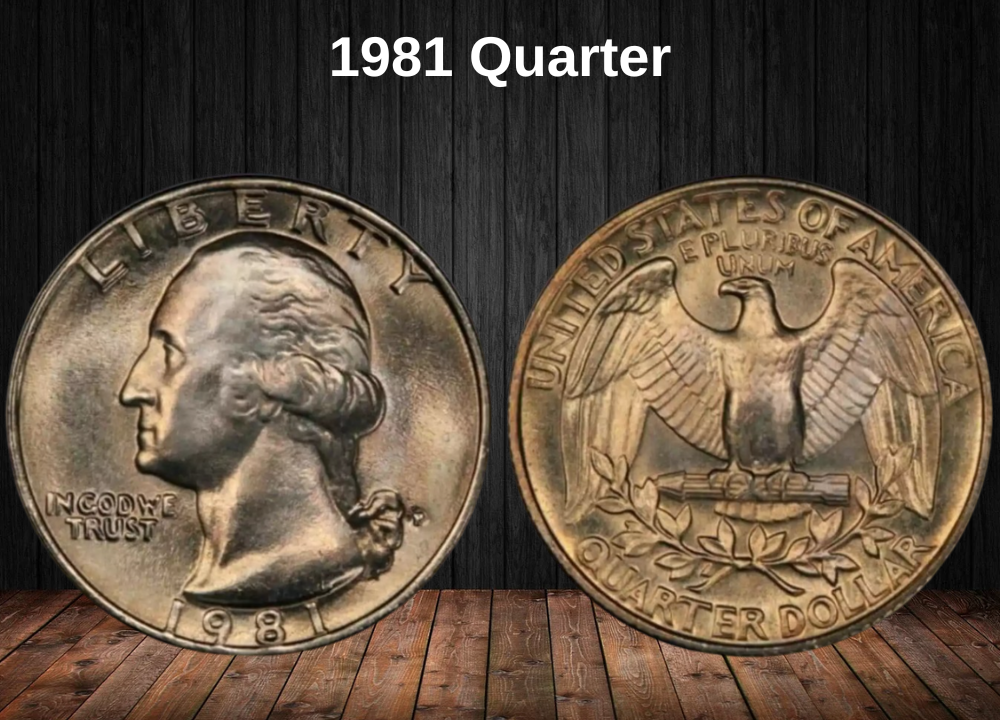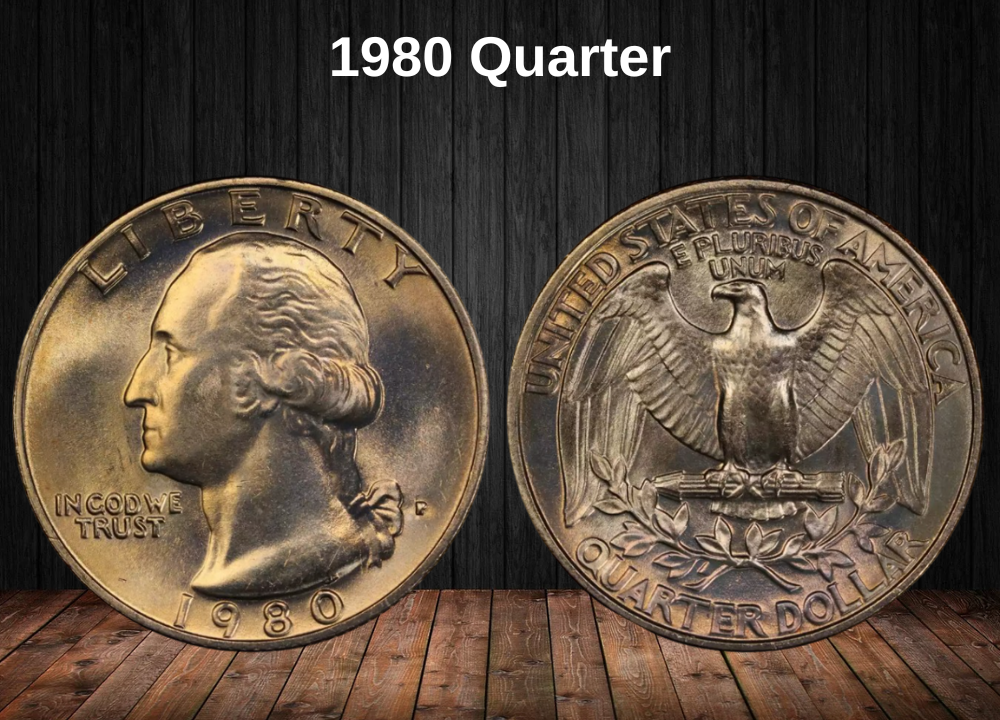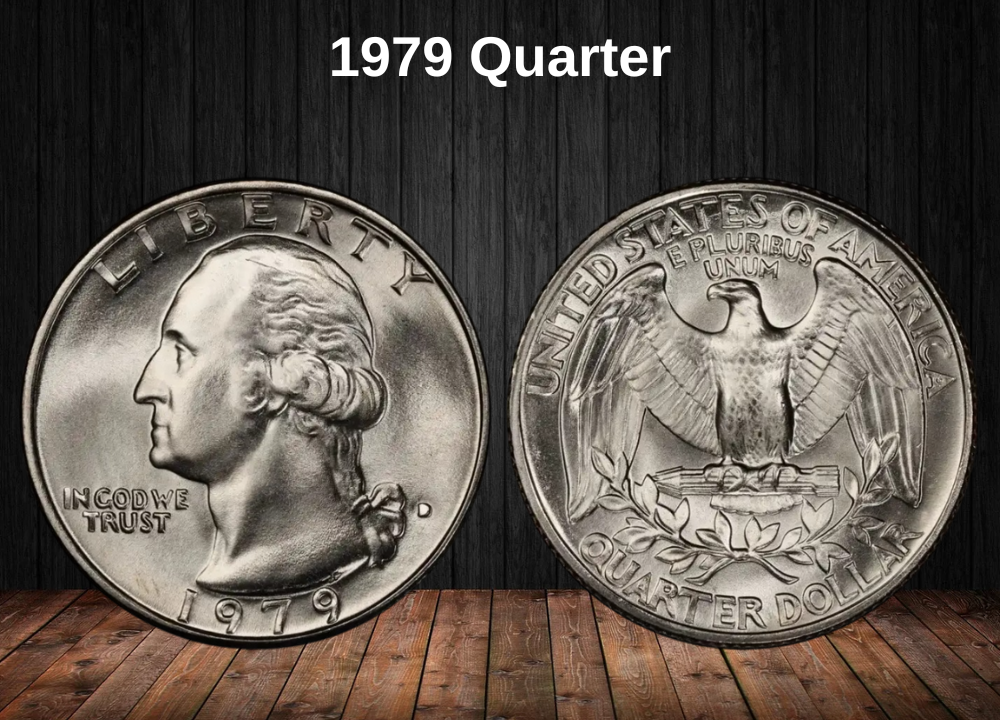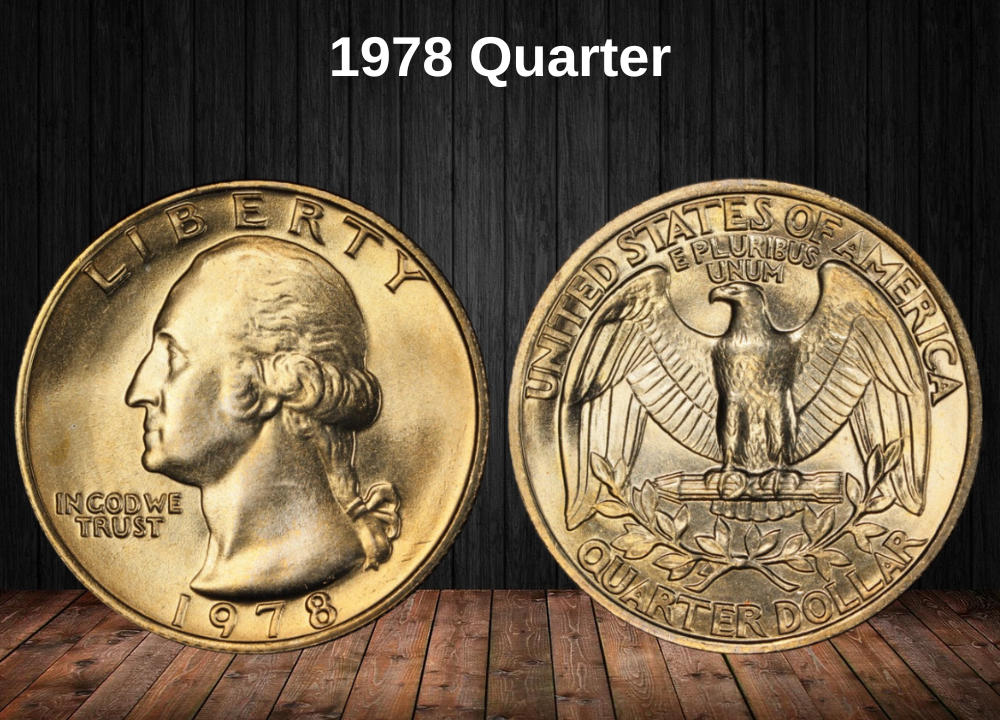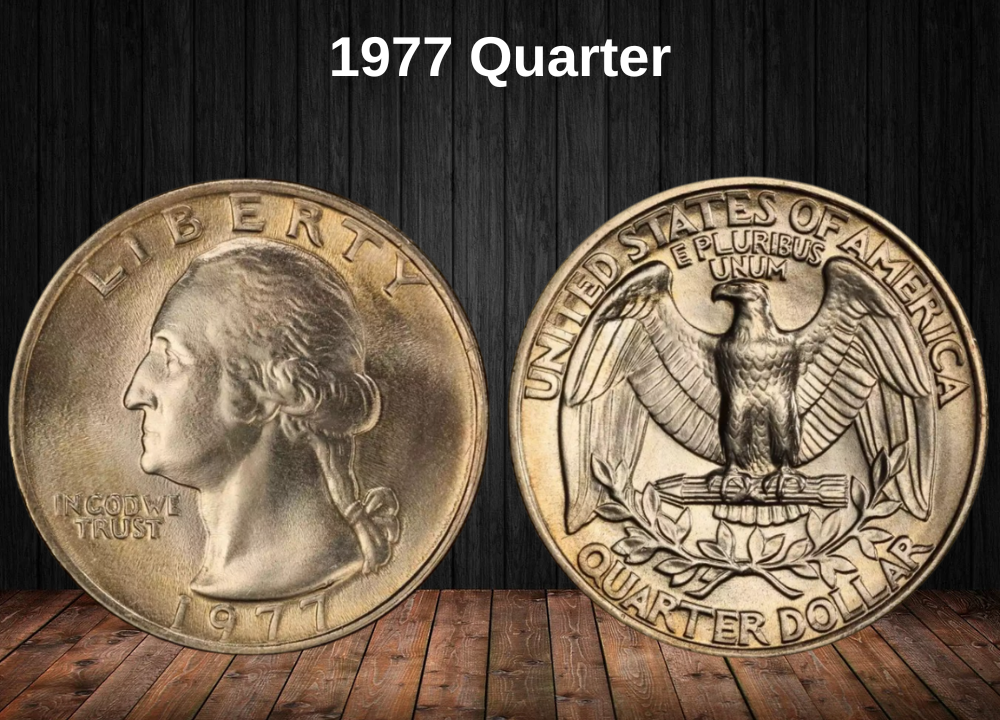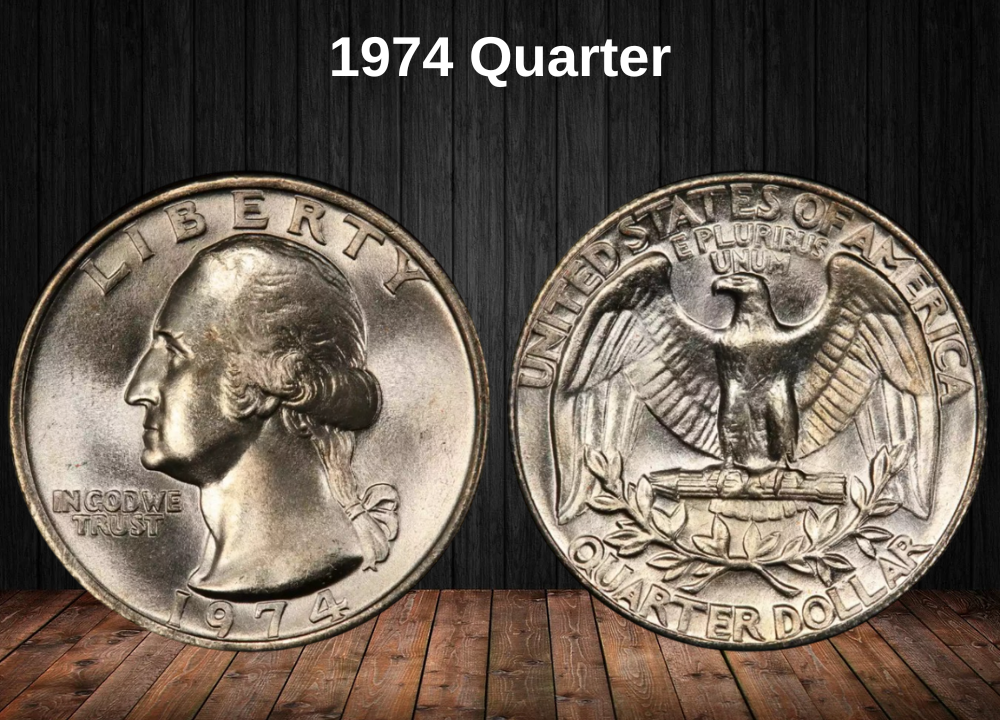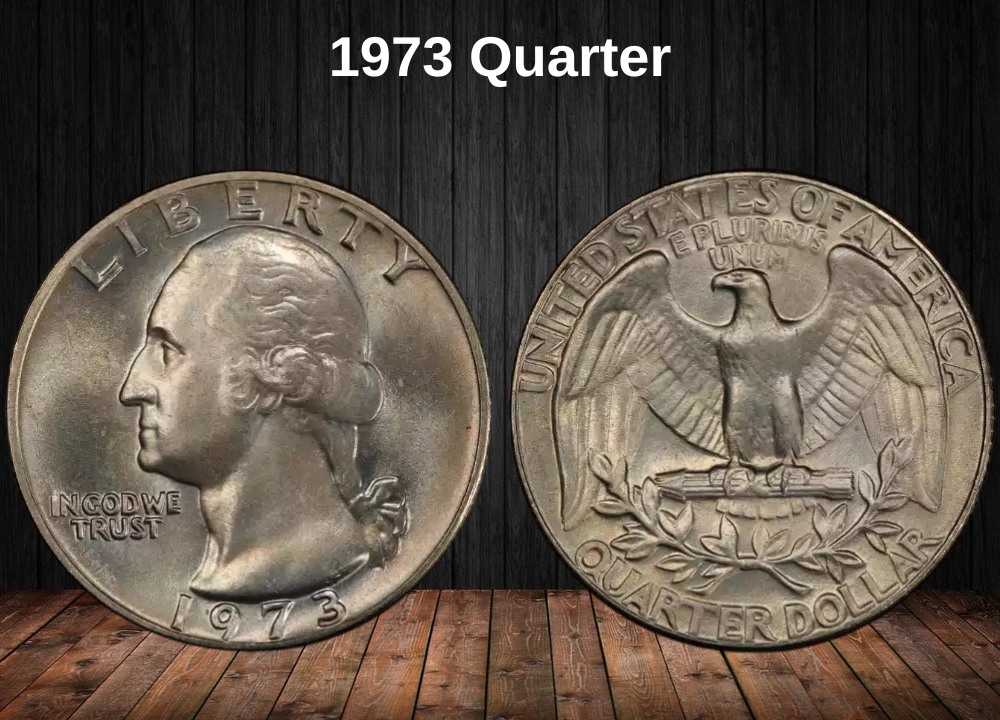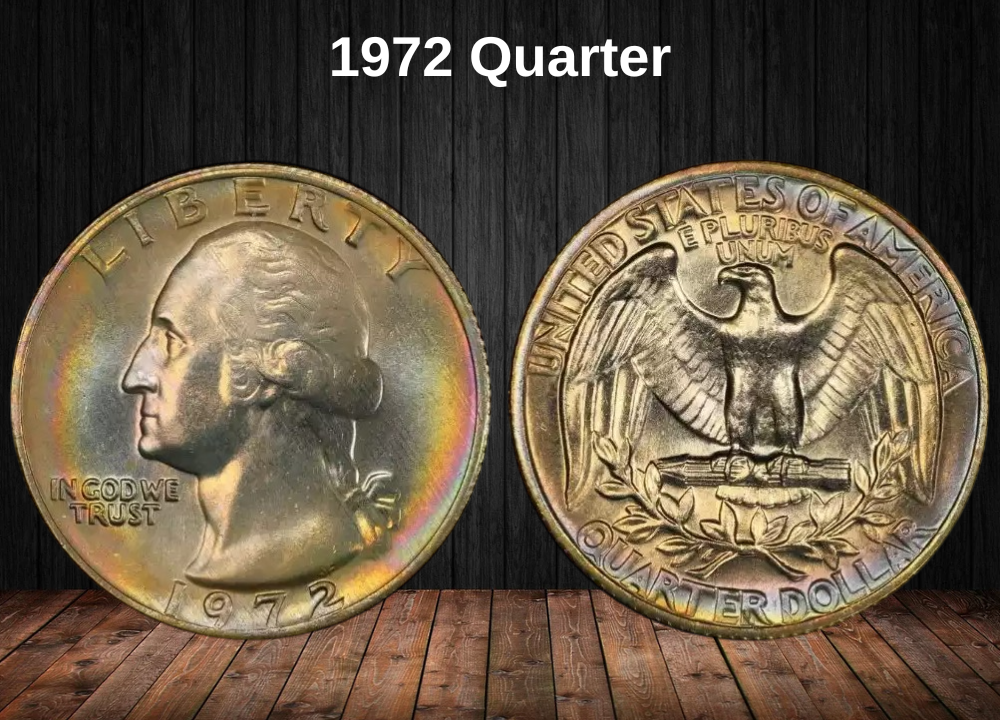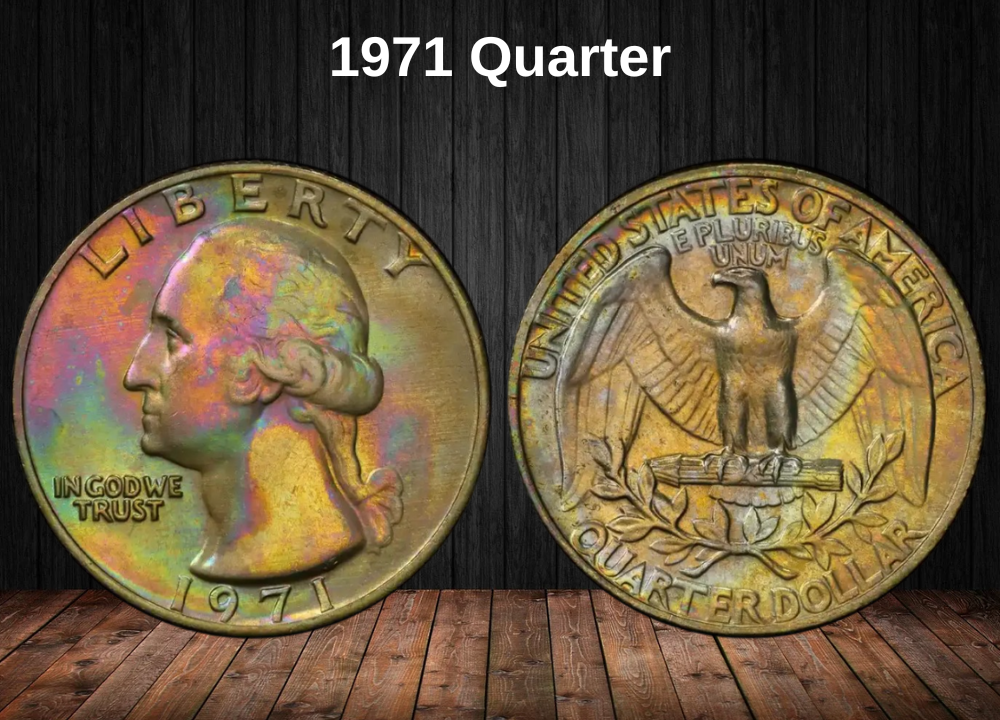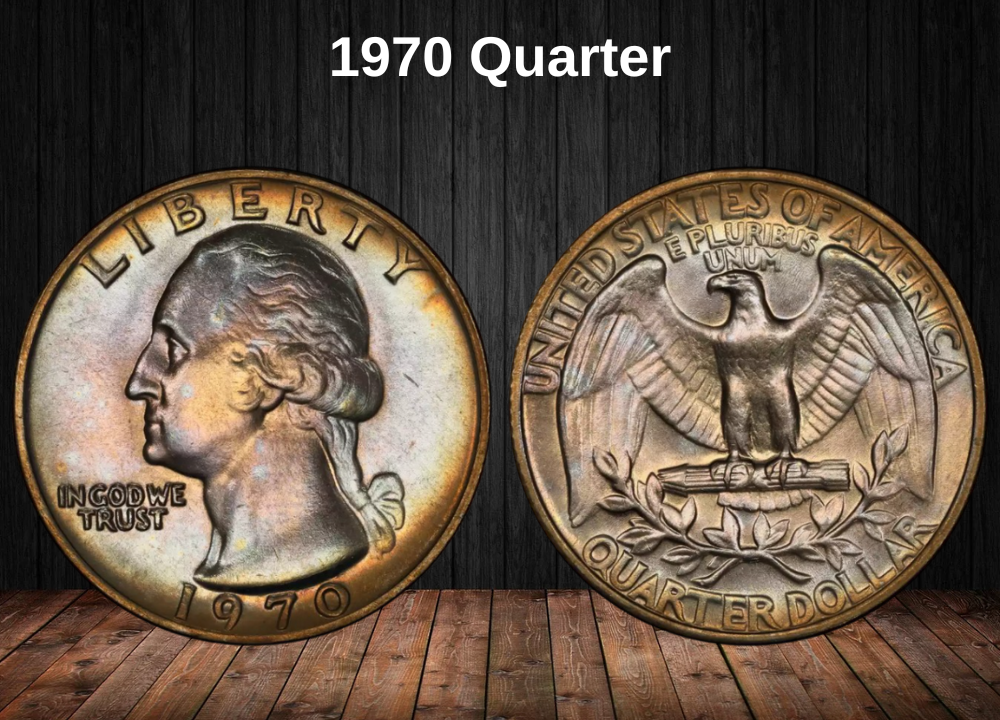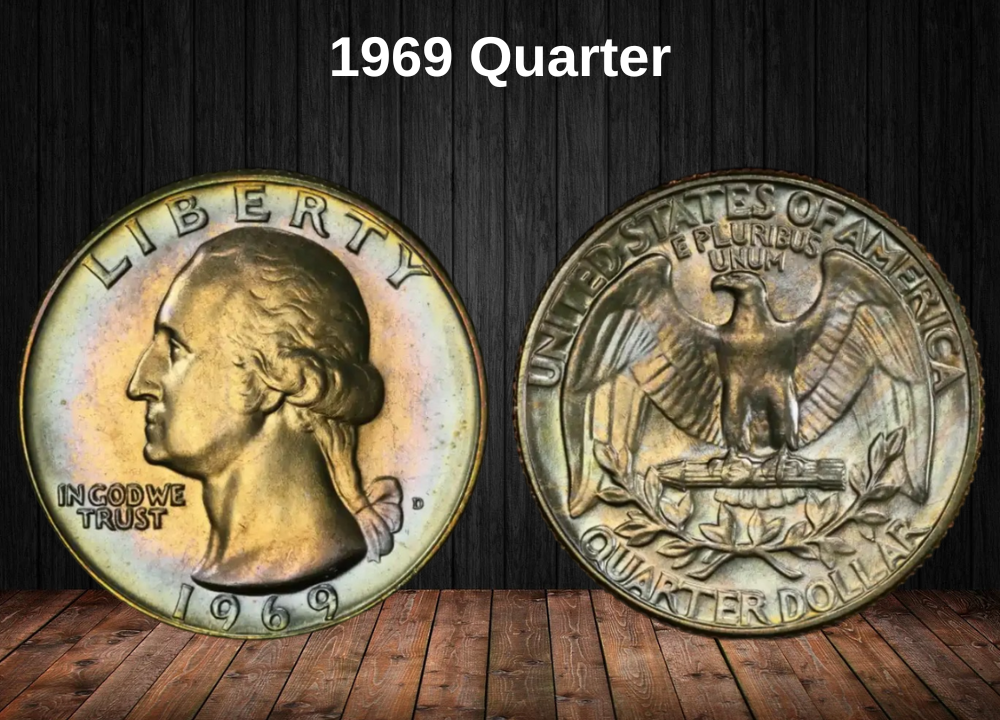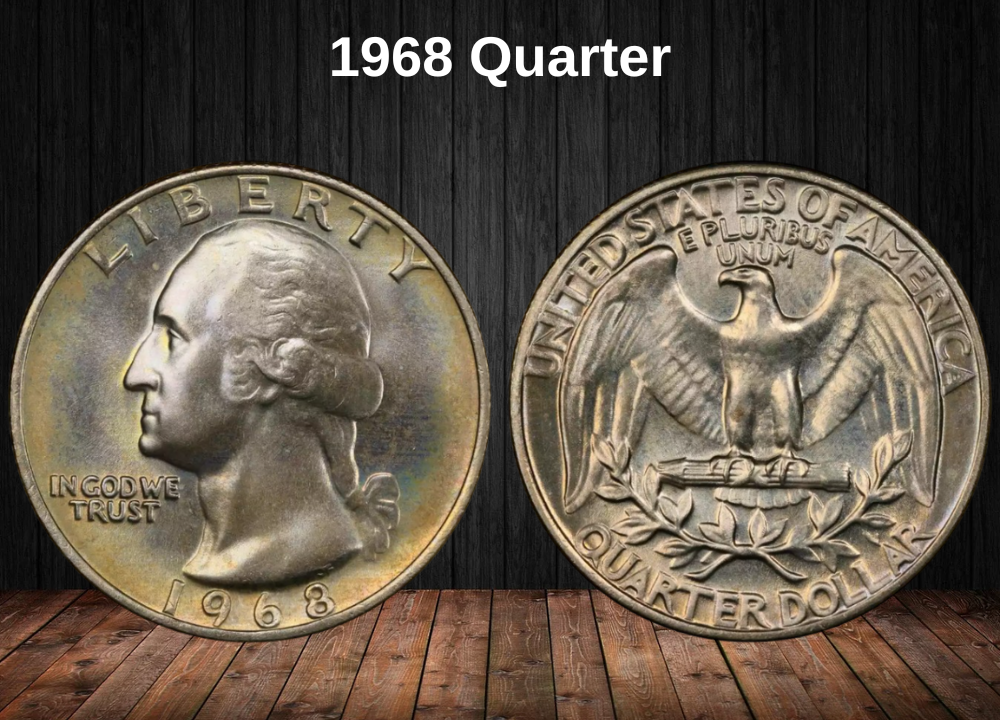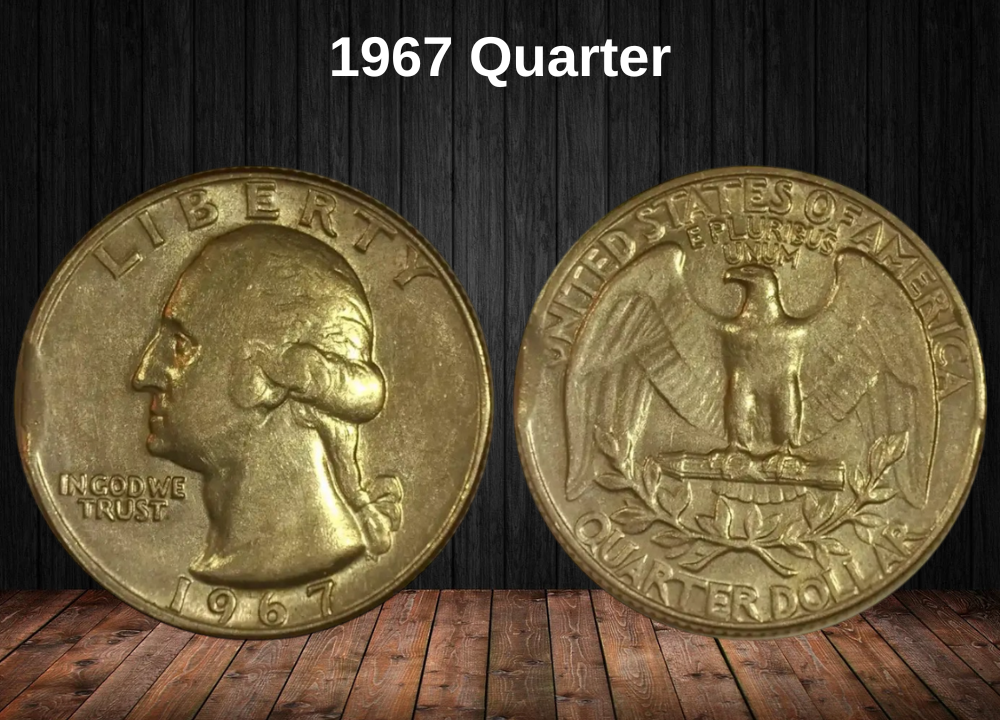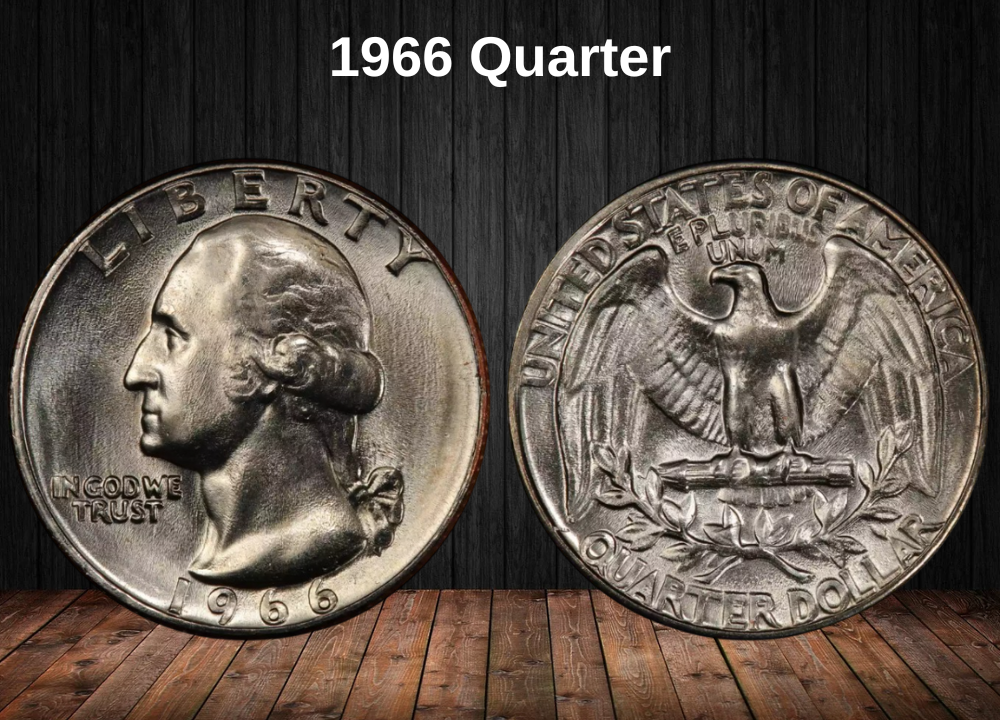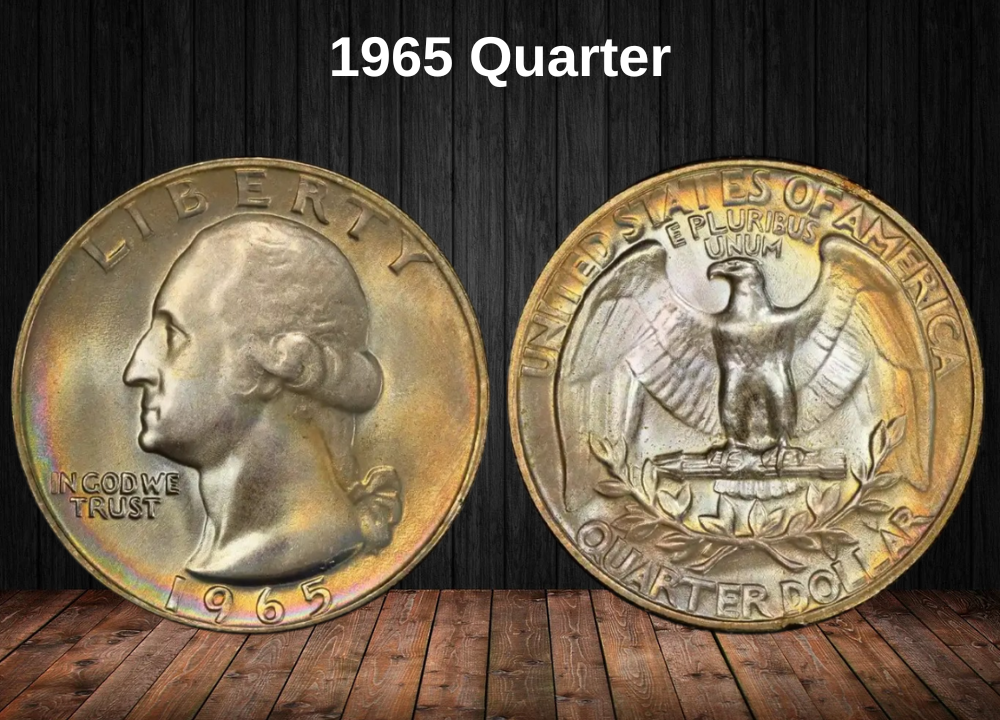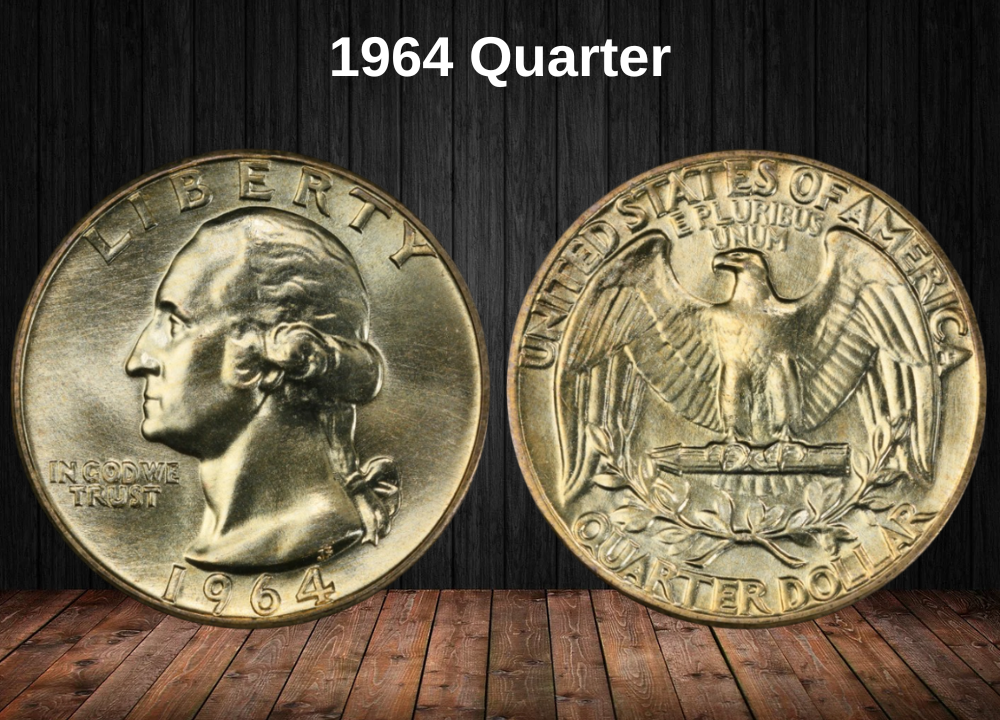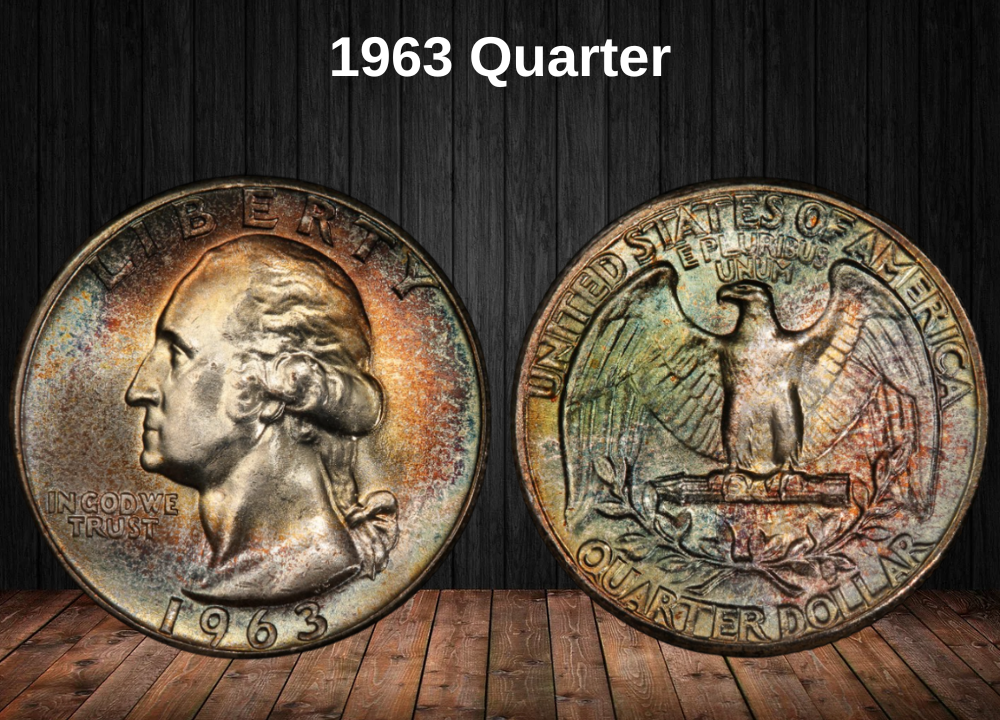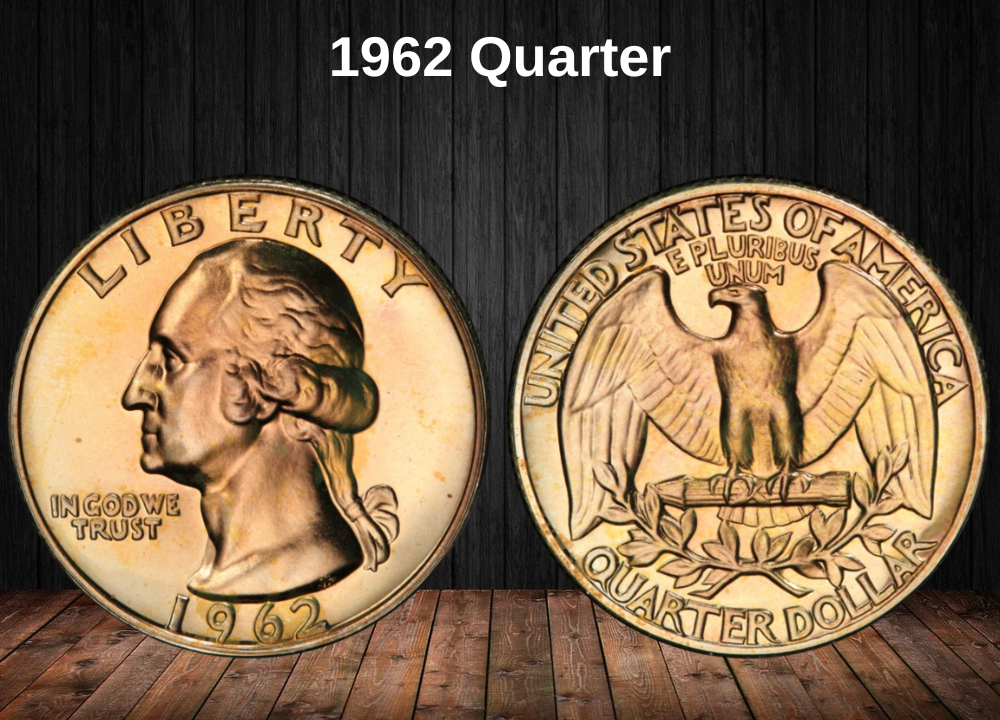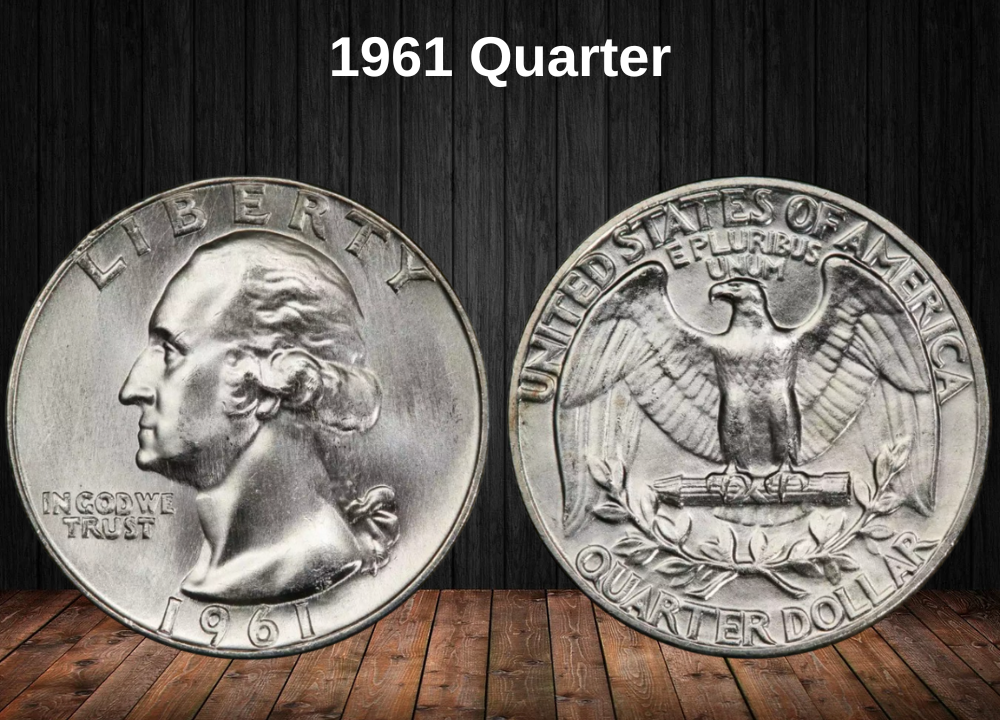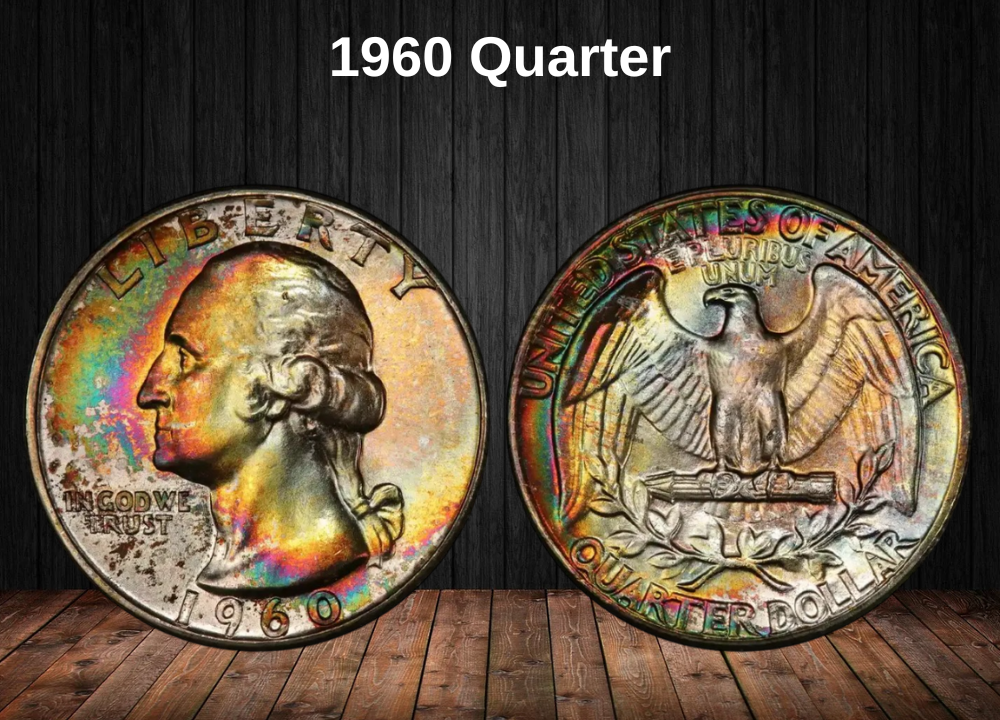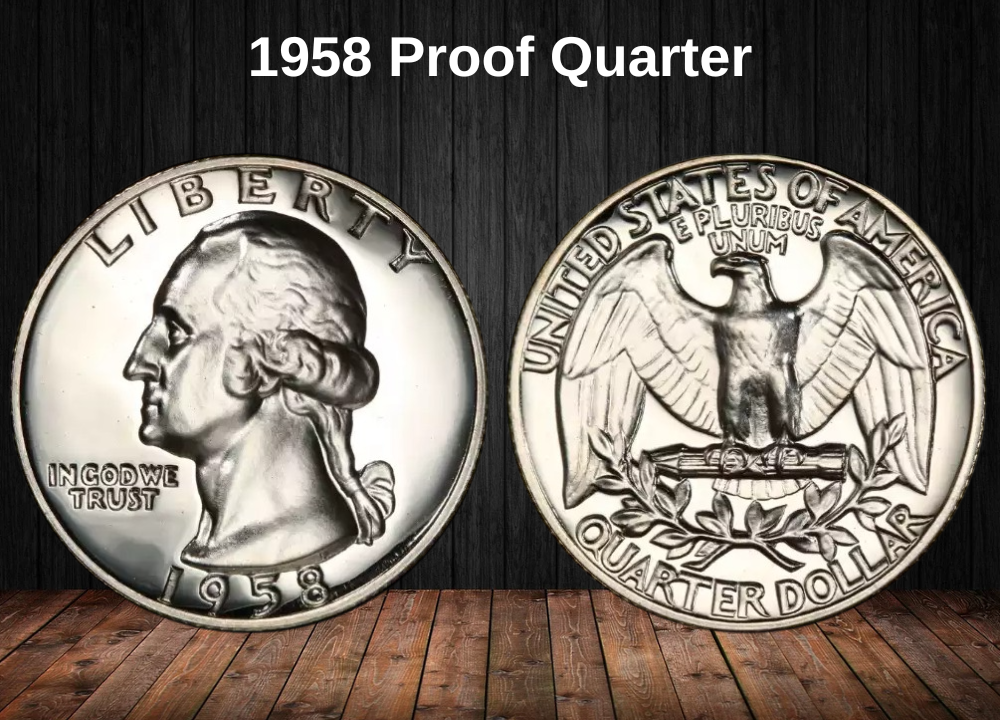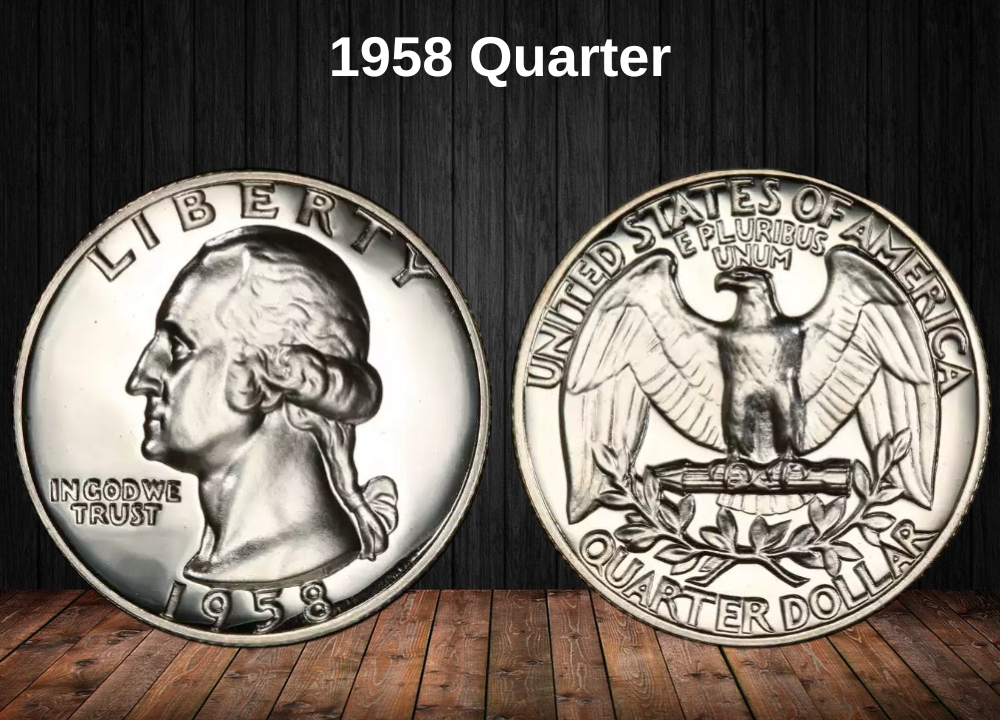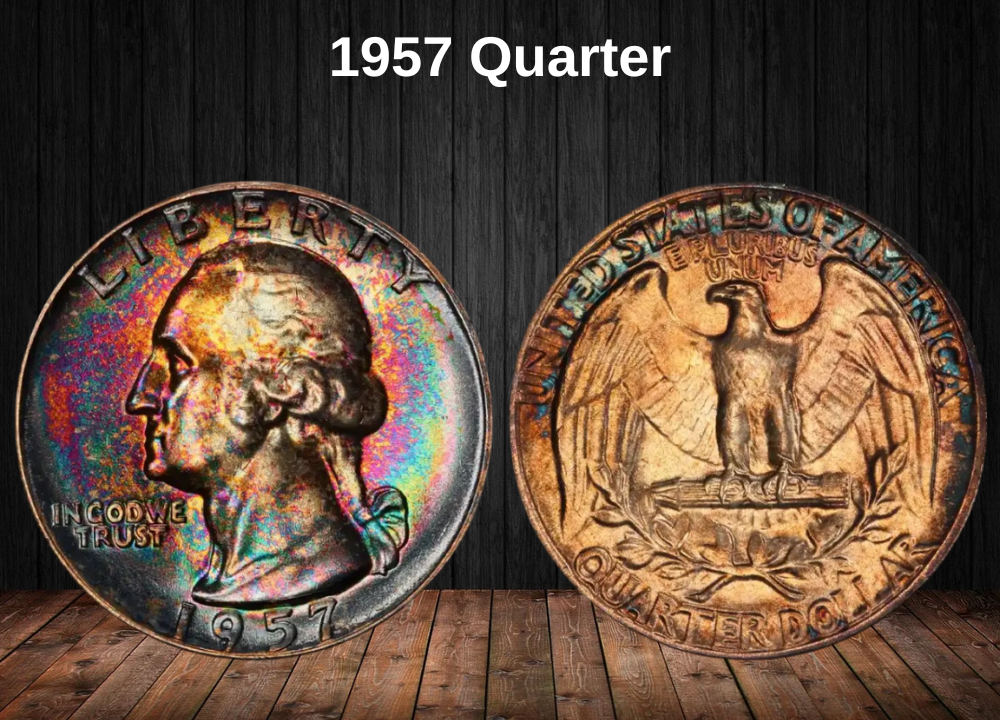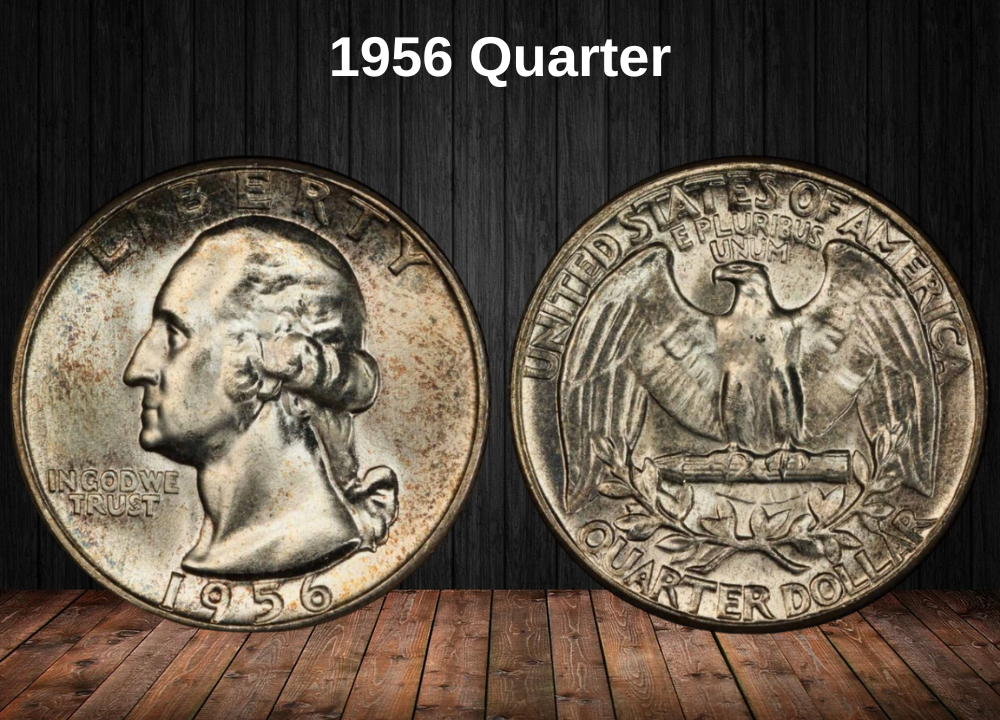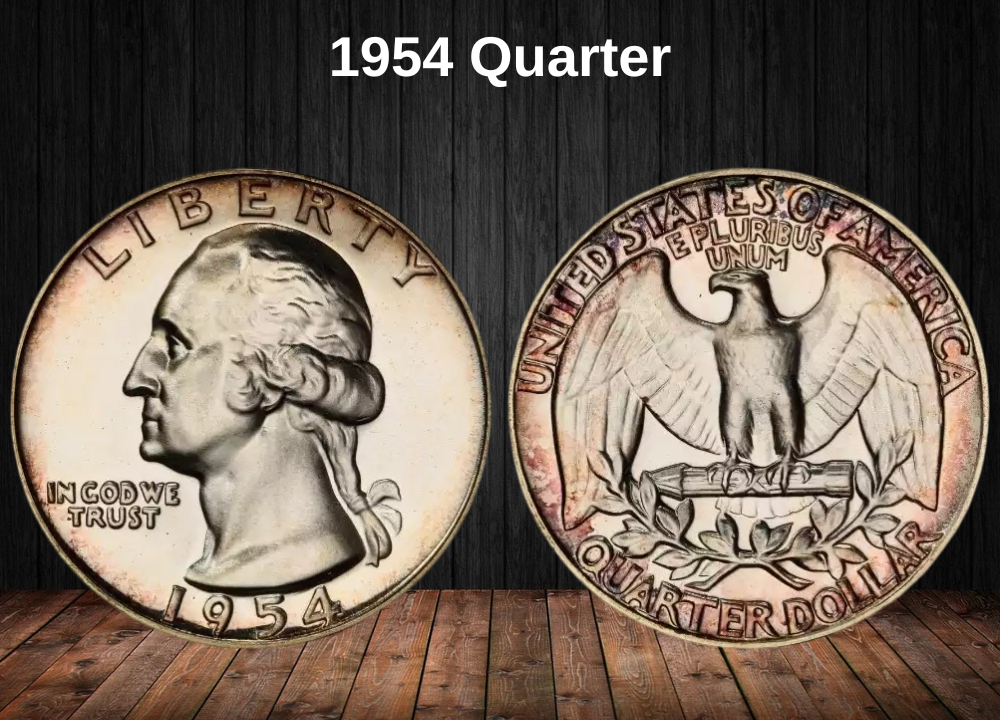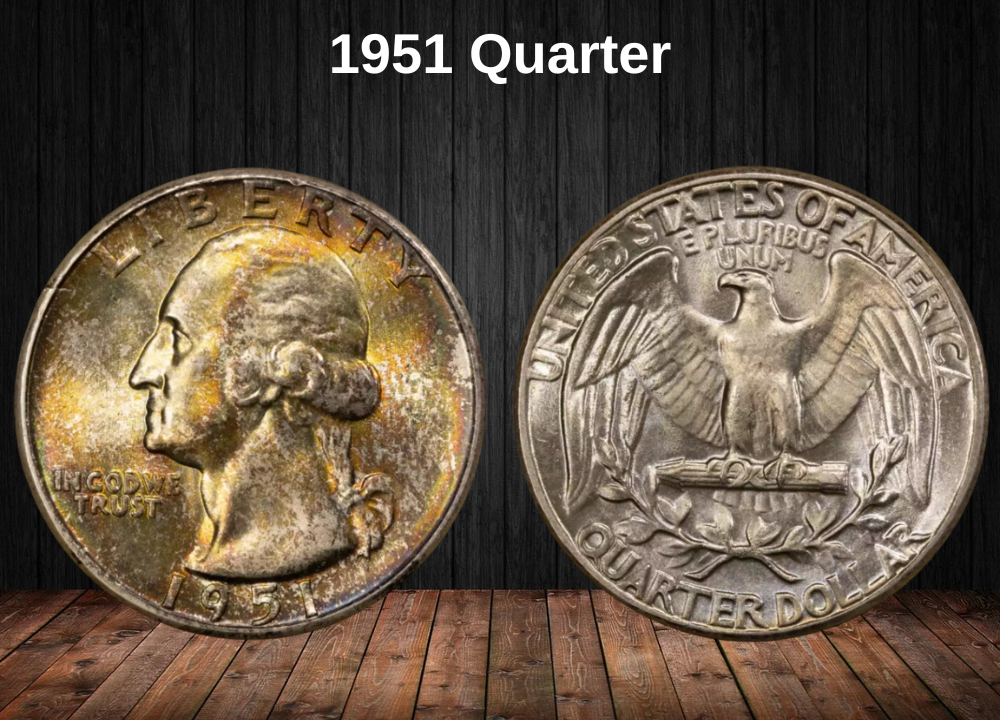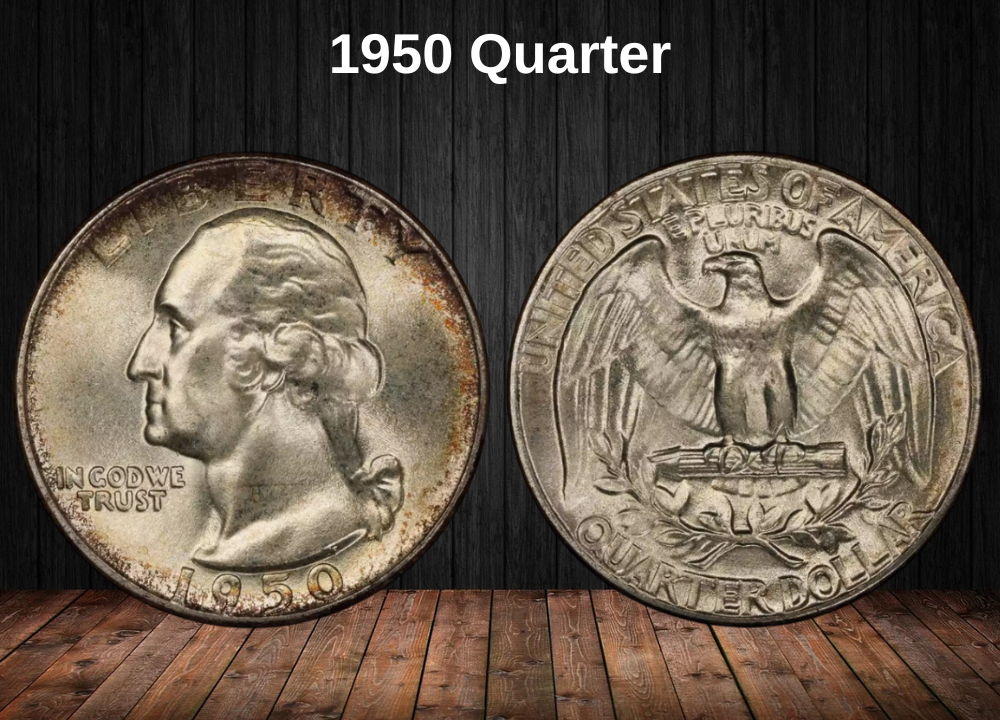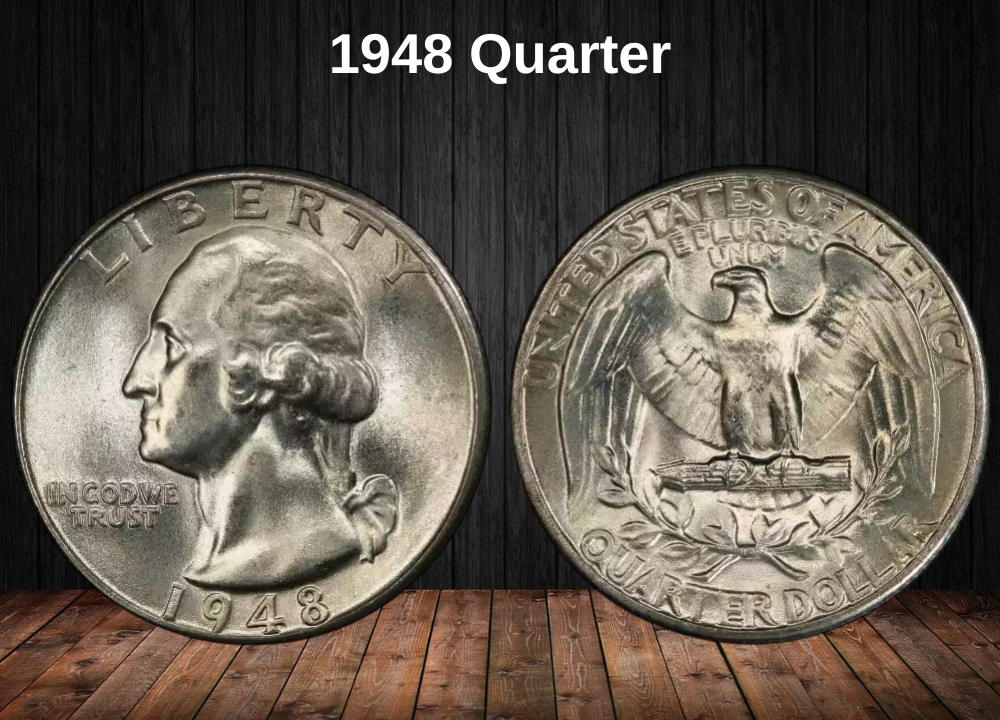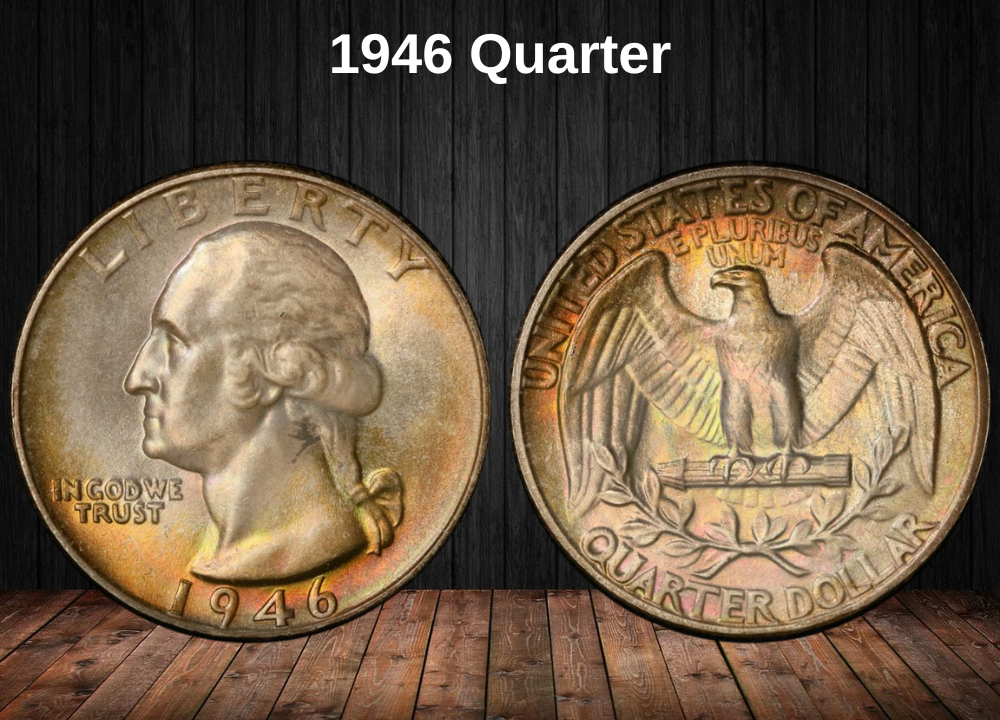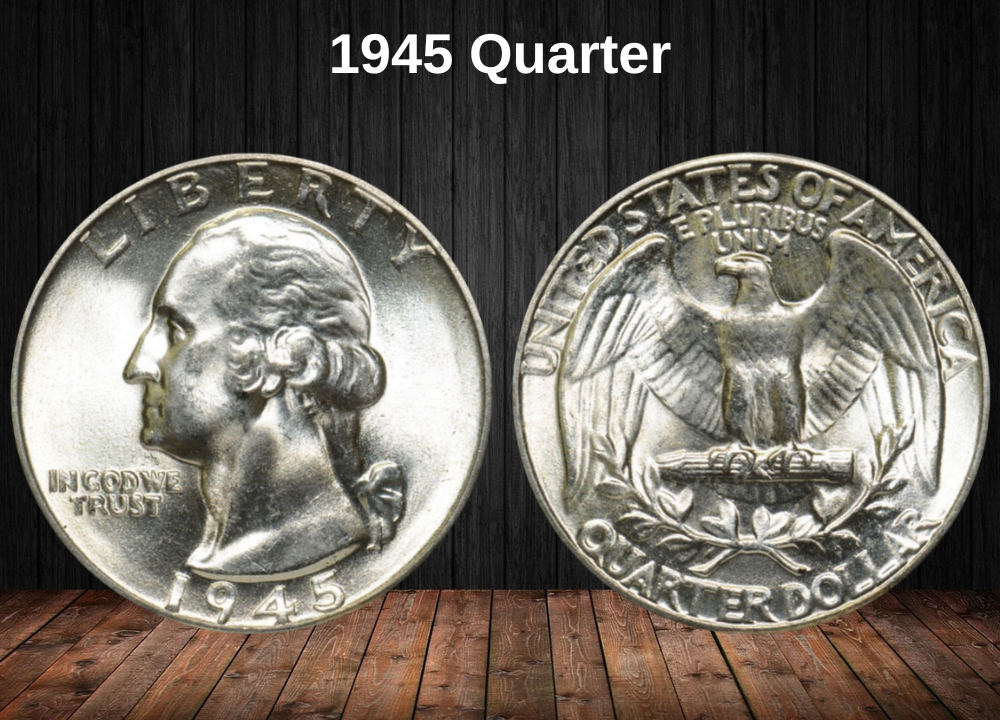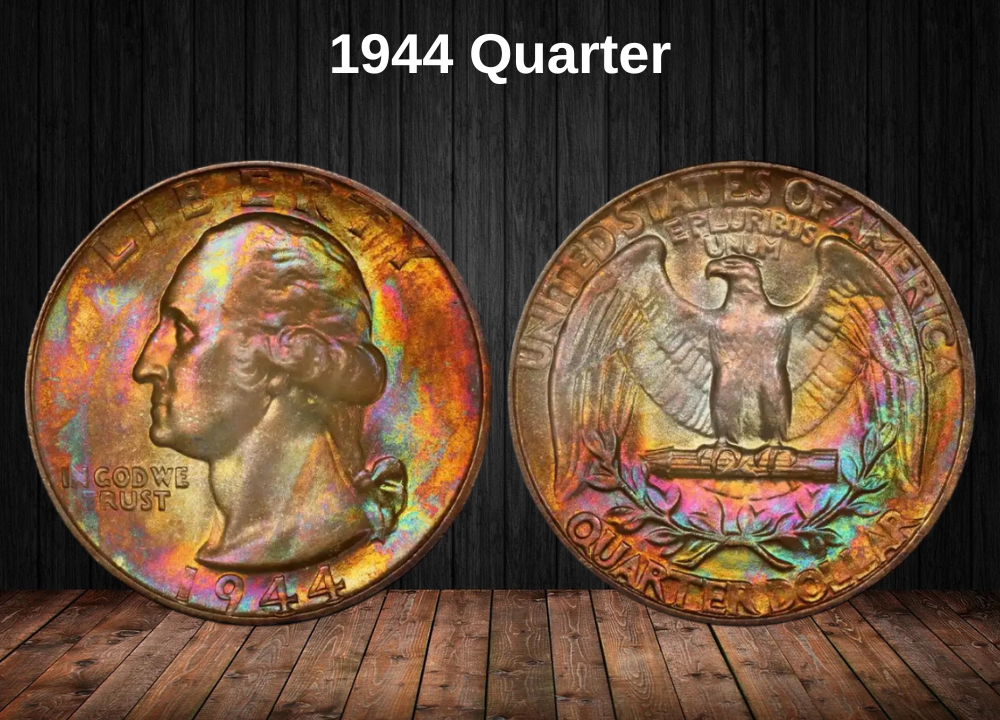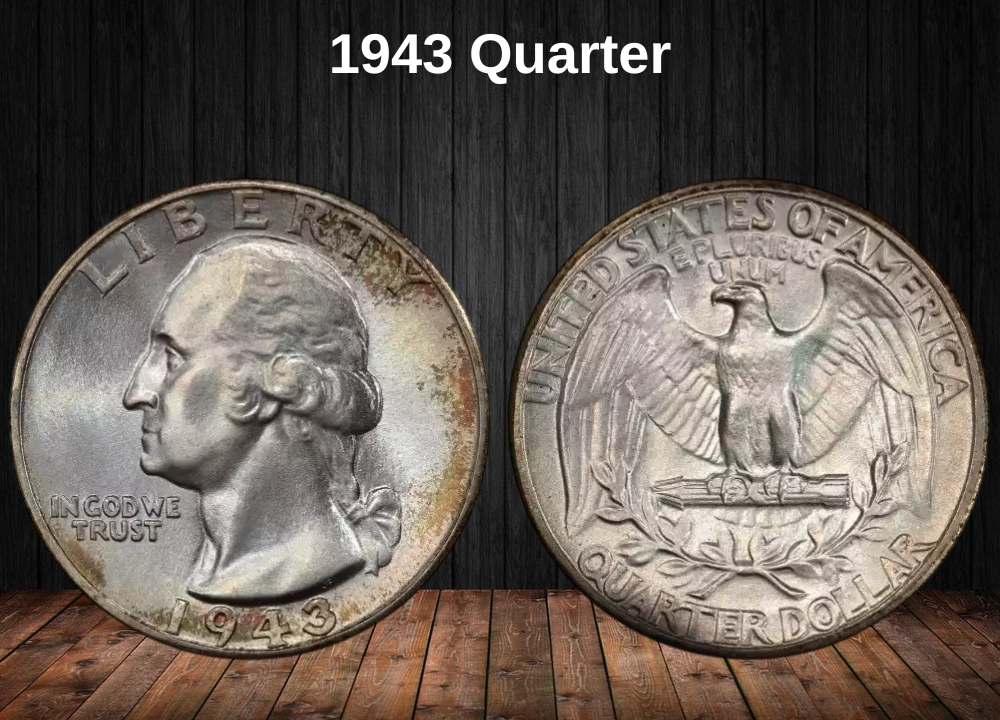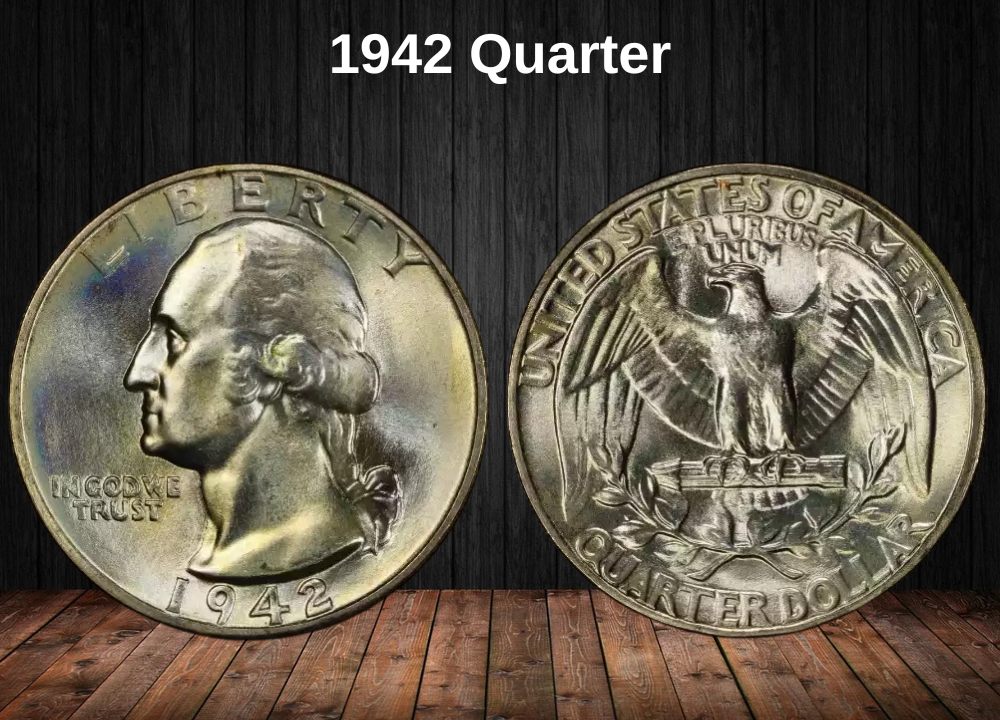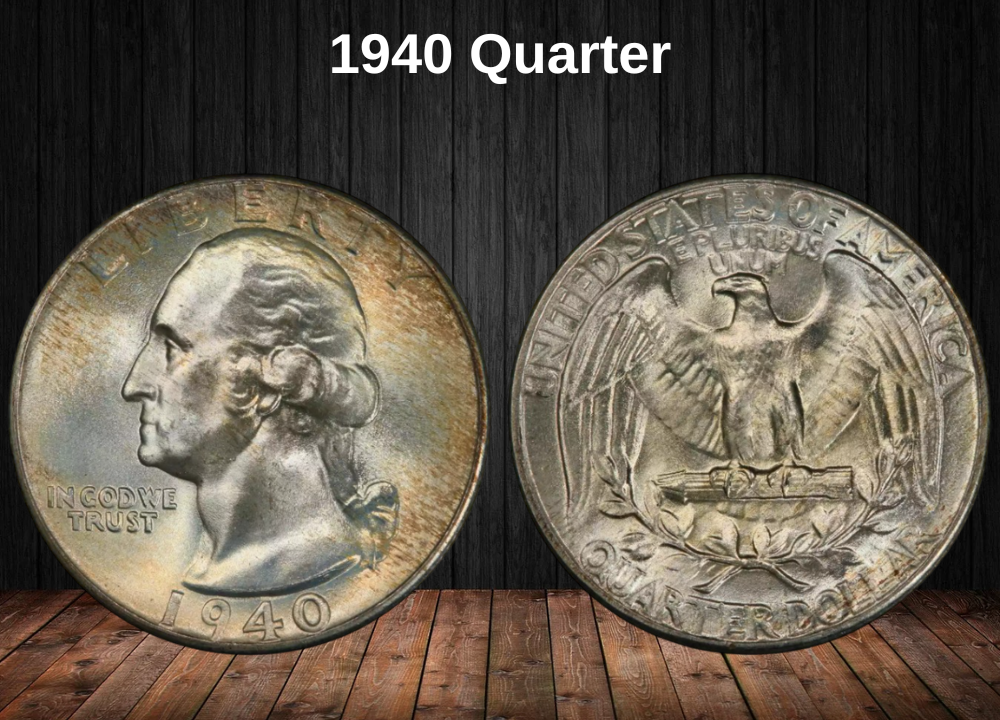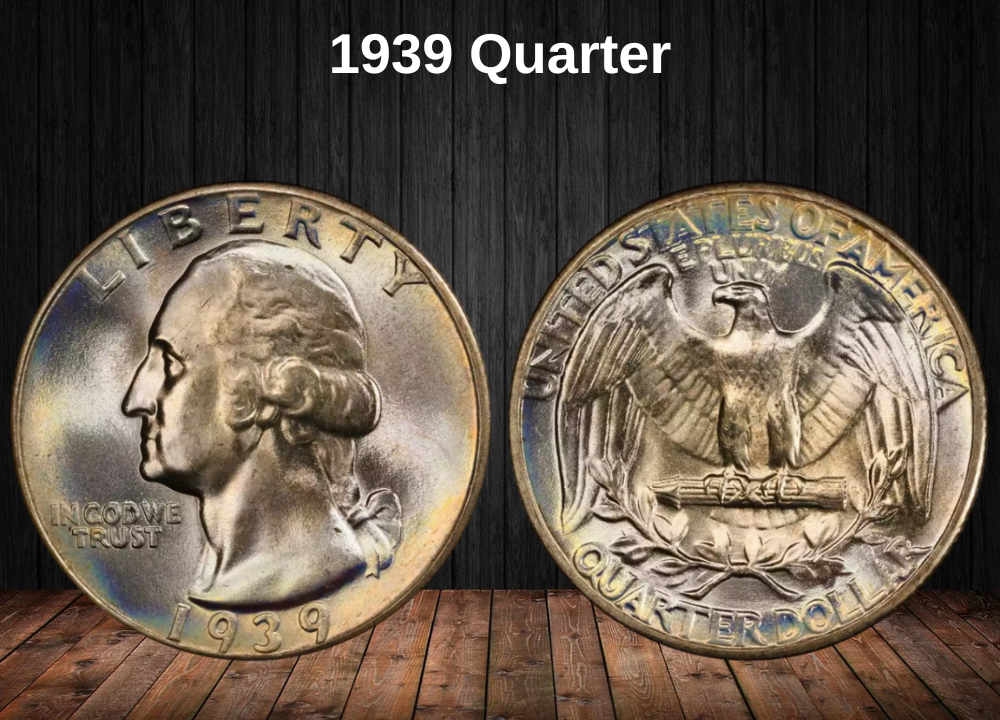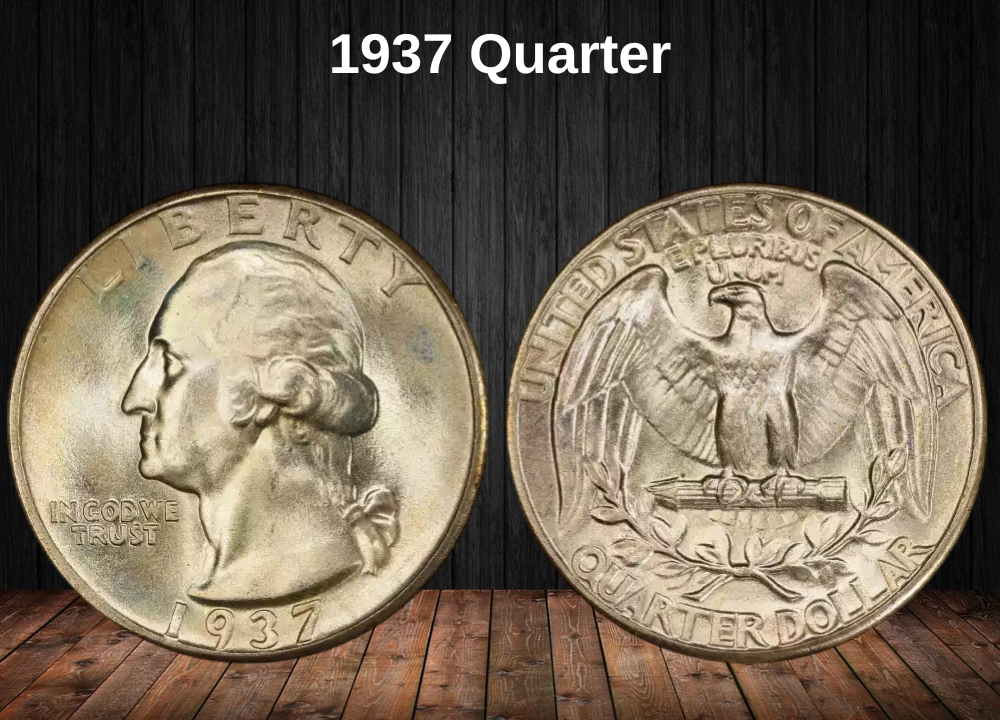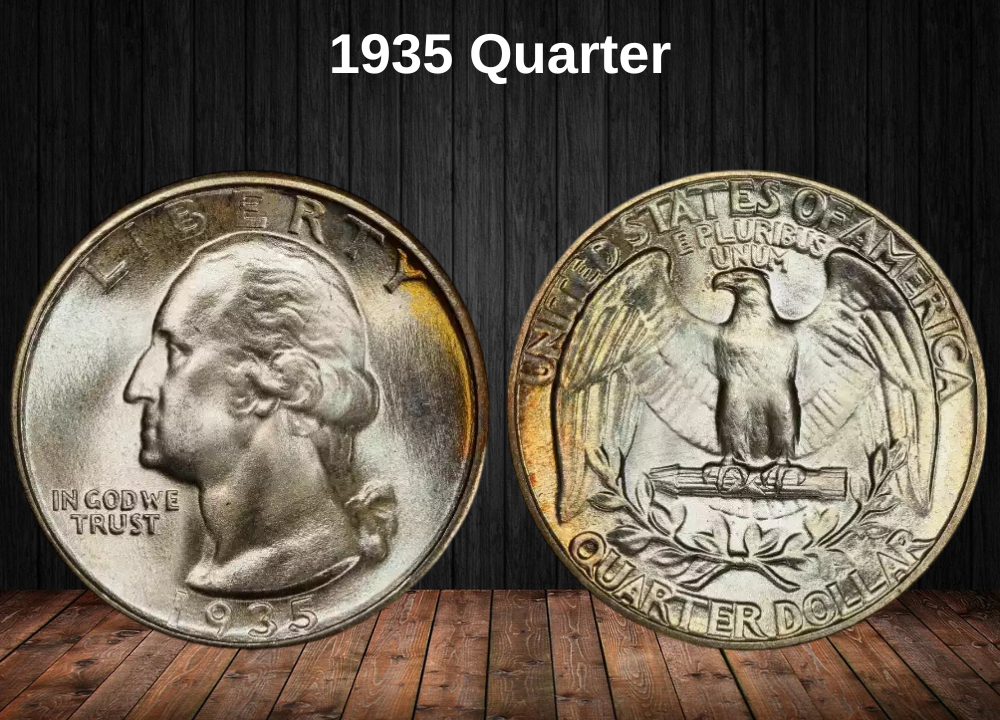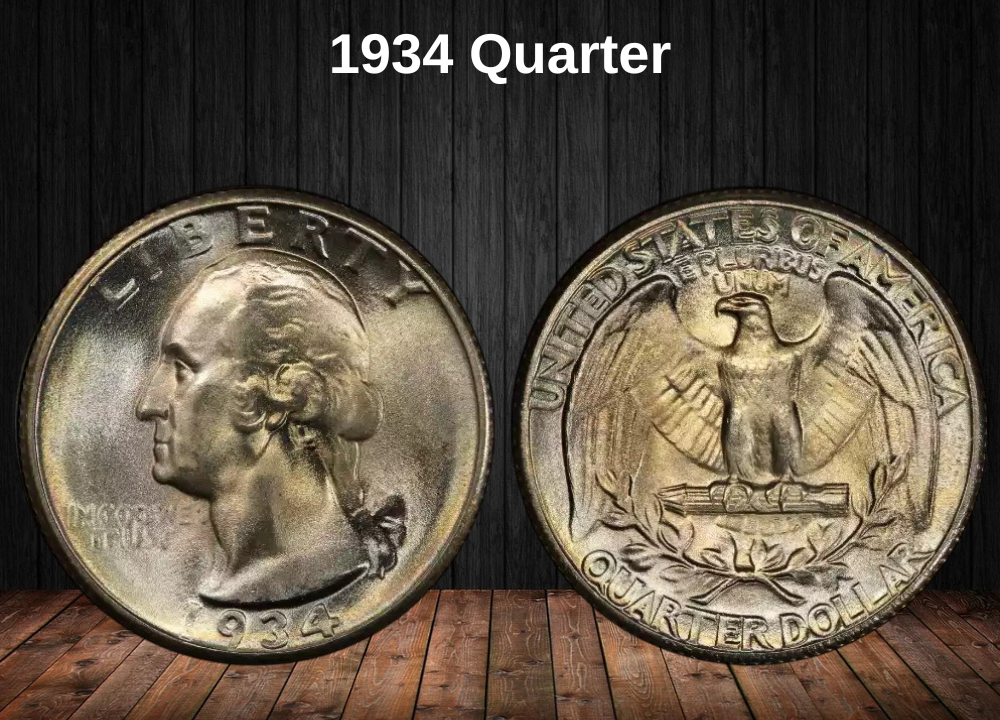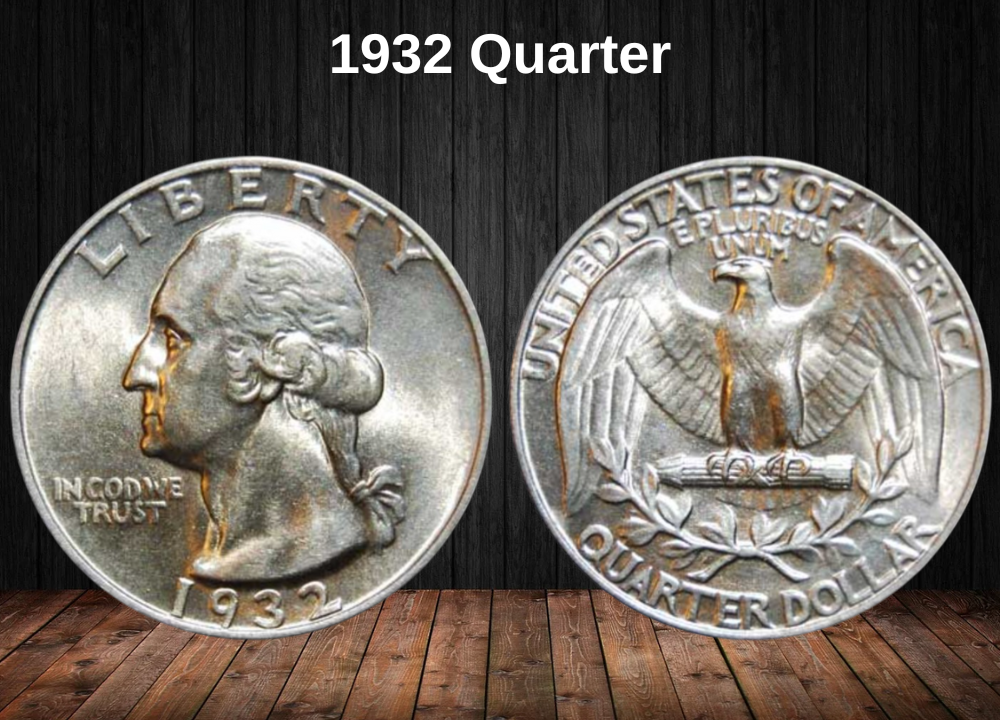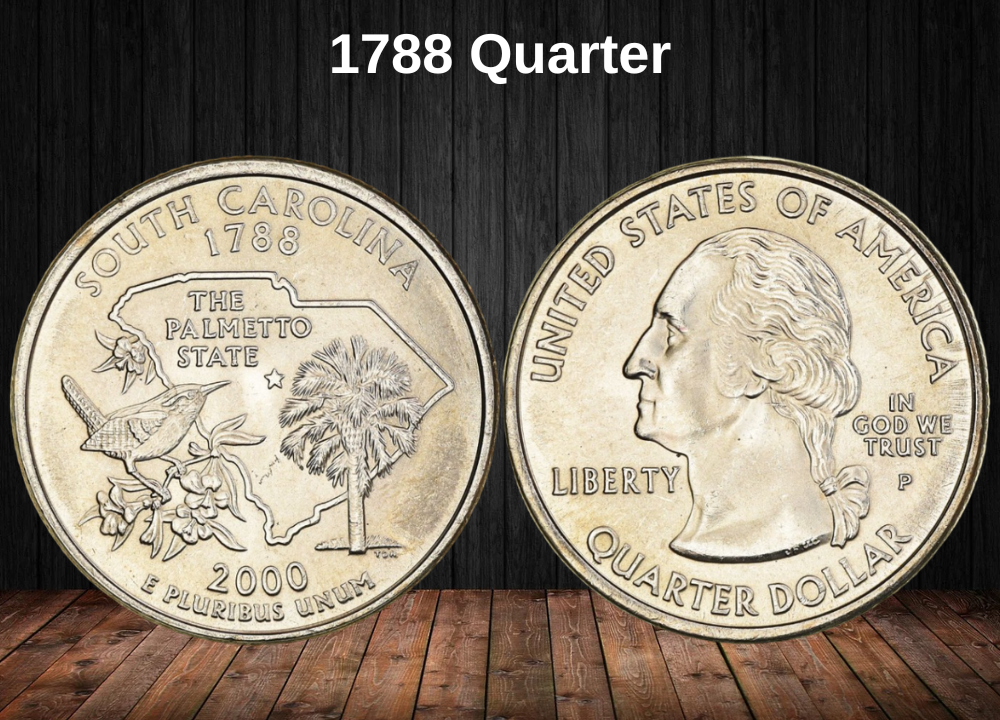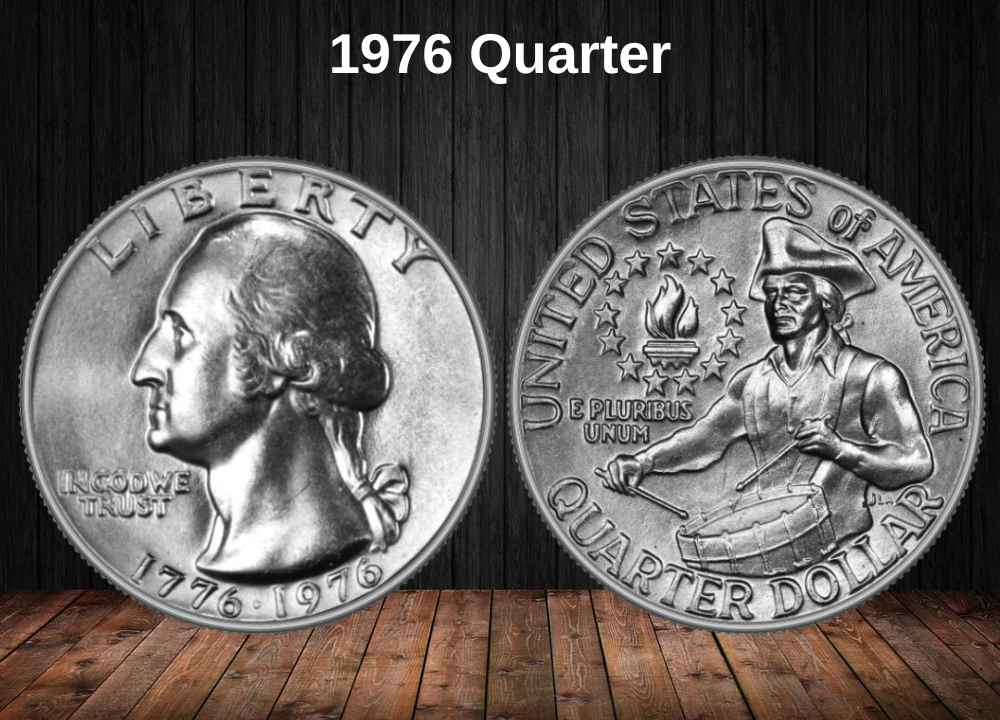The 1941 Washington quarter continues to capture collector interest thanks to its silver composition, multiple mint varieties, and affordable entry-level pricing. Values can range from just a few dollars for well-worn examples to hundreds or even thousands for pristine Mint State and proof issues.
For many, the 1941 quarter serves as an ideal starting point for building a Washington quarter set—struck in large numbers across three major mints, yet with enough scarcity in high grades to remain desirable.
1941 Quarter Value by Variety
Here’s a breakdown of current market prices for 1941 quarters by mint mark and grade (updated 2025):
| Type | Good | Fine | AU | MS | PR |
|---|---|---|---|---|---|
| 1941 No Mint Mark (P) | $7.00 | $7.00 | $7.00 | $30.33 | — |
| 1941-D (Denver) | $7.00 | $7.00 | $17.00 | $49.50 | — |
| 1941-S (San Francisco) | $6.79 | $7.33 | $21.50 | $50.17 | — |
| 1941 Proof (Philadelphia) | — | — | $30.00 | — | $79.17 |
History of the 1941 Quarter
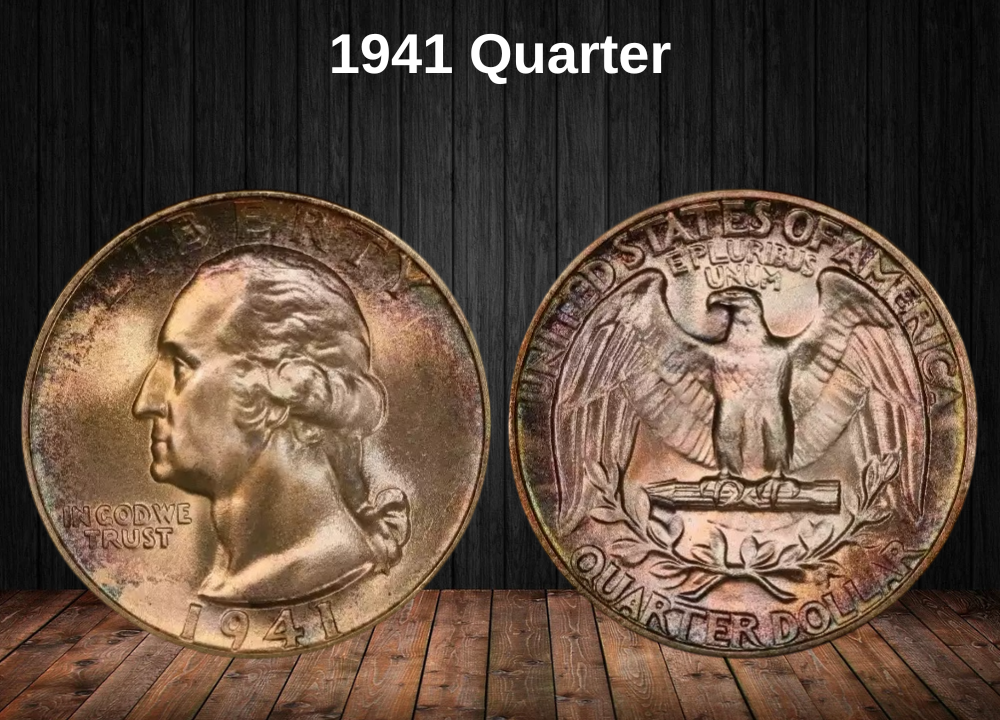
The 1941 Washington quarter marked both continuity and change in American coinage. While the design itself remained unchanged from its 1932 debut, the historical context of this issue gives it special significance.
The Washington quarter was originally created in 1932 to commemorate the 200th anniversary of George Washington’s birth. Although intended as a one-year commemorative, the public embraced John Flanagan’s portrait design so enthusiastically that the Treasury made it a permanent replacement for the Standing Liberty quarter. The decision wasn’t without controversy—many believed Laura Gardin Fraser’s winning design was more elegant, but Treasury Secretary Andrew Mellon chose Flanagan’s version, and it became the standard.
By 1941, the U.S. Mint had entered a new era of production. With the nation recovering from the Great Depression and preparing for potential involvement in World War II, demand for coinage surged. The Philadelphia Mint struck an astonishing 79 million quarters, more than double any prior year’s total. This massive output reflects the booming domestic economy and the growing need for silver coinage in circulation.
The Denver and San Francisco Mints also contributed millions of quarters, while Philadelphia produced a small but important mintage of proof coins for collectors. These proofs—struck with specially polished dies—remain among the most prized examples of pre-war numismatics.
Unlike modern quarters made from copper-nickel, all 1941 quarters contained 90% silver and 10% copper, giving them lasting intrinsic value. Their production represents one of the last stable pre-war years, before wartime metal demands would begin to reshape U.S. coinage.
Key Features of the 1941 Quarter
The 1941 Washington quarter is more than just pocket change—it’s a silver coin that captures America at the edge of global transformation, produced just months before the nation’s entry into World War II. Every detail of its design reflects both historical tradition and the artistry that defined the series for decades.
Obverse of the 1941 Quarter
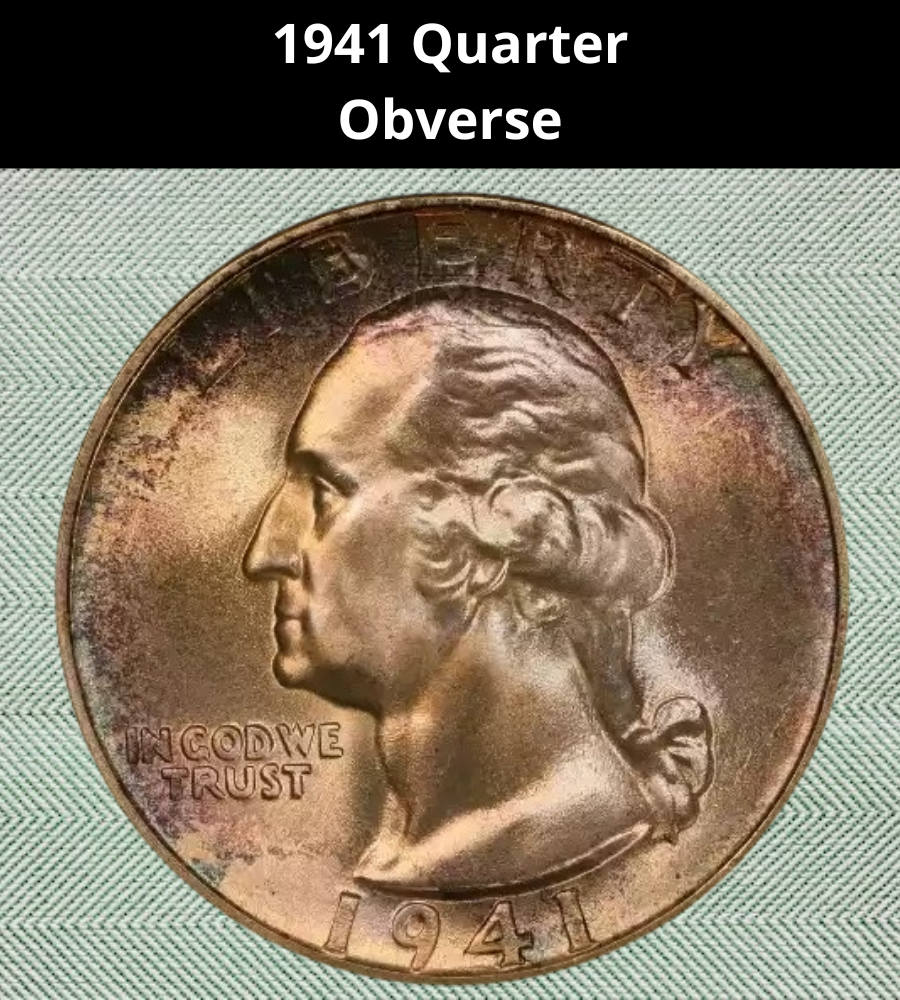
The obverse (“heads” side) features George Washington’s profile, facing left. John Flanagan’s design was based on the famous Jean-Antoine Houdon sculpture of Washington, created directly from a life mask of the President.
Key elements include:
- LIBERTY inscribed above Washington’s head.
- The motto IN GOD WE TRUST positioned left, below his chin.
- The date 1941 at the bottom.
- Designer JF initials discreetly placed at the neckline truncation.
This portrait remained essentially unchanged on quarters until the State Quarters redesign of 1999, making it one of the longest-running coin designs in U.S. history.
Reverse of the 1941 Quarter
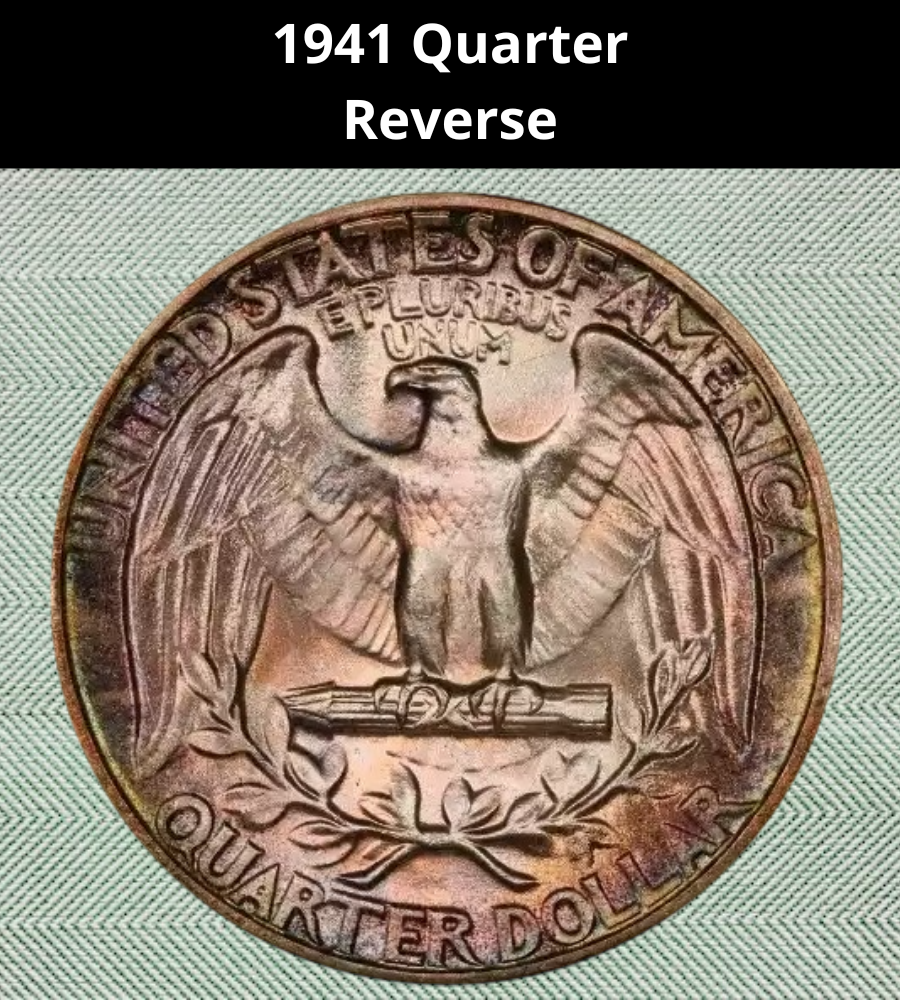
The reverse carries Flanagan’s heraldic eagle—a bold symbol of American strength and unity.
Design details:
- The eagle perches on a bundle of arrows, representing readiness for defense.
- Below the arrows lies an olive branch, symbolizing the nation’s desire for peace.
- UNITED STATES OF AMERICA curves along the top rim.
- The motto E PLURIBUS UNUM appears above the eagle’s head.
- The denomination QUARTER DOLLAR rests at the bottom.
- Mint marks (D for Denver, S for San Francisco, or blank for Philadelphia) are located just beneath the olive branch.
Other Features of the 1941 Quarter
- Metal Composition: 90% silver, 10% copper.
- Weight: 6.25 grams (heavier than today’s clad quarters).
- Diameter: 24.3 mm.
- Thickness: 1.75 mm.
- Edge: Reeded, with 119 reeds—originally designed to prevent clipping of silver.
Notably, coins from this era show slightly softer legends and dates compared to later issues. In 1944, the Mint modified the dies to sharpen lettering and enlarge the date for improved clarity.
1941 Quarter Grading
Grading determines how much your 1941 Washington quarter is really worth. The table below summarizes the main grade levels, the diagnostic features, and what collectors look for in each condition tier:
| Grade | Obverse (Washington’s Portrait) | Reverse (Eagle) | Market Notes |
|---|---|---|---|
| Good (G-4) | Heavy wear; Washington’s hair completely flat; motto and date still visible but weak. | Eagle outline visible, but breast feathers and wing details worn smooth. | Worth just above silver melt; common in this grade. |
| Fine (F-12) | Moderate wear; some hair definition near the ear; cheek shows flattening. | Wing outlines visible; breast still flat but some feather texture present. | Affordable entry-level collector piece. |
| Very Fine (VF-20) | More detail visible in hair curls; cheek contours defined. | Olive branch and arrows visible; wings show light detail. | Popular grade for budget-conscious collectors. |
| Extremely Fine (XF-40) | Strong hair detail; only minor flattening on high points (cheekbone, ear). | Feathers and arrows sharp; olive leaves clearer. | Collectors start paying real premiums at this level. |
| About Uncirculated (AU-50 to AU-58) | Nearly all detail intact; slight rub on cheekbone and jaw. | Eagle’s breast feathers show only light friction; strong eye appeal. | Excellent value tier; looks Mint State to the naked eye. |
| Mint State (MS-60 to MS-65) | Full hair detail; no wear, only minor bag marks; strong luster. | Feathers sharp and complete; olive branch bold. | MS-65 examples show superior eye appeal and strong demand. |
| Gem Mint State (MS-66 to MS-68) | Exceptional strike; rainbow or golden toning often present; flawless surfaces. | Every feather crisp; reflective luster across the coin. | Rare, premium-level coins; registry set competition pushes prices high. |
| Proof (PR-64 to PR-68) | Mirror-like surfaces, frosted devices; Washington’s portrait sharply defined. | Deep strike detail on eagle; cameo contrast prized. | Rare 1941 Proofs command auction prices in the hundreds to thousands. |
1941 Quarter Value Guides
1941 No Mint Mark Quarter Value
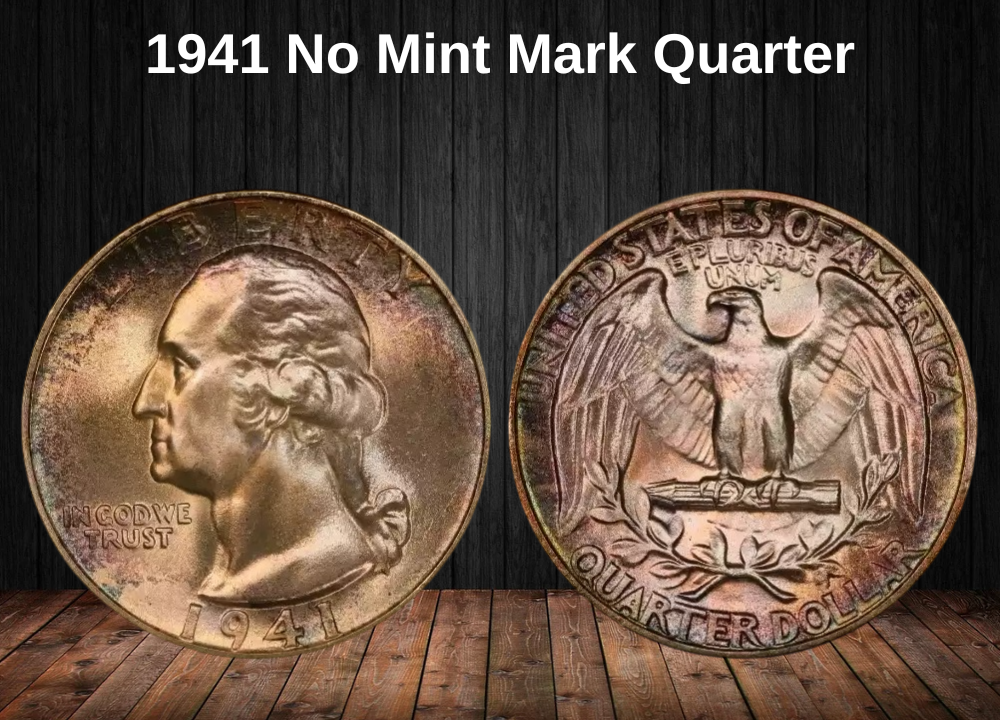
The 1941 Philadelphia quarter (no mint mark) stands as the workhorse of American coinage during a turning point in history. With more than 79 million struck, it was the final “normal” pre-war issue before World War II reshaped the U.S. Mint’s priorities and America’s economy.
What makes this issue fascinating is its dual identity: common in circulated grades but increasingly scarce in pristine Mint State. These coins circulated heavily across the nation, meaning most survivors show wear, bag marks, or dull toning. Finding fully lustrous examples with sharp strikes is a genuine challenge—making high-grade specimens especially prized by collectors.
Philadelphia quarters from this year carry no mint mark, following the Mint’s tradition dating back to its earliest days. That lack of a mark has become its own badge of authenticity, signaling the Philadelphia Mint’s central role during one of America’s most uncertain eras.
1941 No Mint Mark Quarter Price/Grade Chart
| Date | Auction House | Grade | Price |
|---|---|---|---|
| 11/24 | HA | MS68 | $10,800 |
| 08/24 | HA | MS66 | $360 |
| 06/24 | SB | MS65 | $85 |
| 05/24 | HA | MS68 | $10,800 |
| 07/23 | HA | MS67 | $240 |
| 06/23 | HA | MS66 | $53 |
| 05/23 | HA | MS67 | $129 |
| 05/23 | LM | MS67 | $764 |
| 04/23 | SB | MS67 | $216 |
| 02/23 | HA | MS67 | $264 |
1941-D Quarter Value
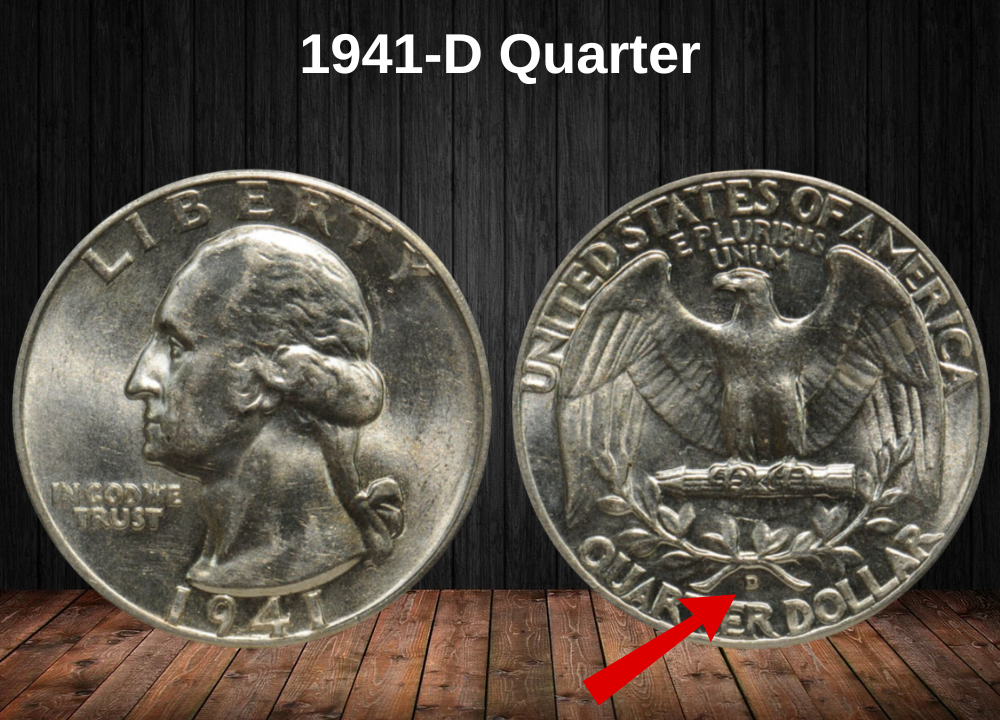
The 1941-D Washington quarter represents Denver’s role in U.S. pre-war coinage, identified by the small “D” mint mark just below the olive branch on the reverse. With a mintage of about 16.7 million, it’s far scarcer than Philadelphia’s massive output, giving it stronger long-term collector appeal.
What sets the 1941-D apart is not only its lower mintage but also its distinct Denver striking characteristics. Coins from this mint often show sharper central detail with unique die polish lines, though some examples exhibit softer edges due to local die wear. These quirks make the 1941-D especially interesting for variety and error specialists.
For collectors, the 1941-D strikes the balance between affordability in circulated grades and true scarcity at the Gem Mint State level. While circulated examples trade only slightly above silver melt, certified MS67 and MS68 pieces have reached multi-thousand-dollar prices at auction.
1941-D Quarter Price/Grade Chart
| Date | Auction House | Grade | Price |
|---|---|---|---|
| 08/24 | HA | MS68 | $2,040 |
| 08/24 | HA | MS67 | $1,020 |
| 05/24 | HA | MS68 | $2,232 |
| 03/24 | HA | MS68 | $3,120 |
| 07/23 | HA | MS66 | $99 |
| 06/23 | HA | MS67 | $504 |
| 04/23 | DL | MS65 | $51 |
| 04/23 | DL | MS65 | $52 |
| 04/23 | HA | MS67 | $408 |
| 04/23 | DL | MS65 | $49 |
1941-S Quarter Value
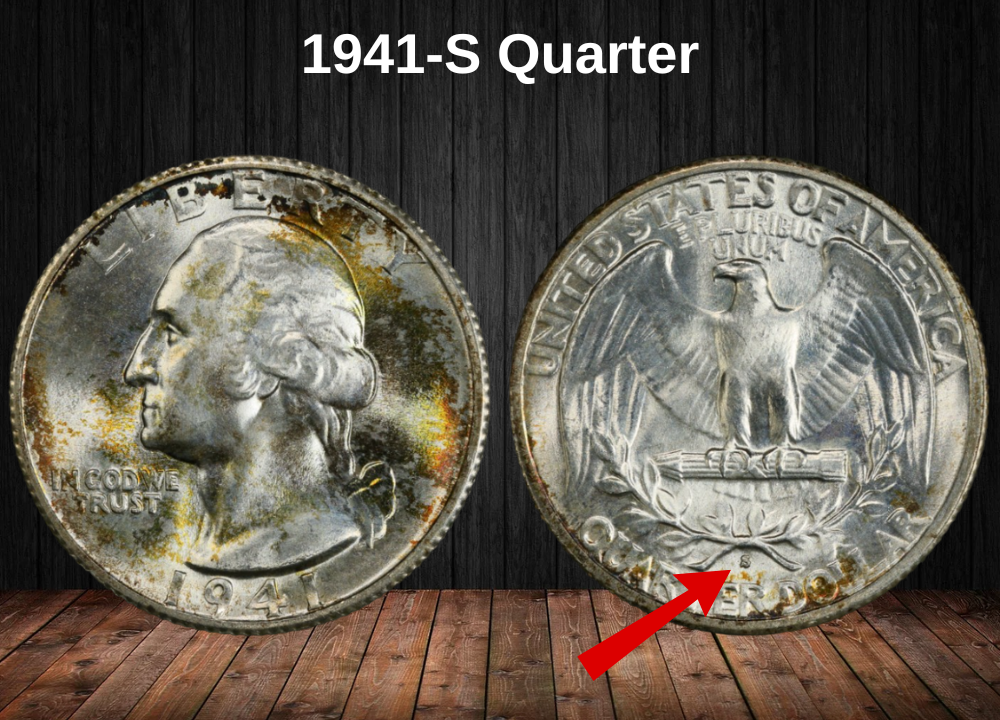
The 1941-S Washington quarter is often considered the most intriguing issue of the year, not simply for its mintage but for its survival story. Struck at the San Francisco Mint, this variety is easily identified by the “S” mint mark located beneath the olive branch on the reverse.
While the mintage was nearly identical to Denver’s (about 16.7 million coins), far fewer 1941-S quarters survived in higher grades. The explanation lies in history: heavy West Coast circulation during wartime years, combined with economic pressures around Pearl Harbor and the Pacific Theater, caused these coins to wear out faster and disappear from collectors’ hands.
Today, the 1941-S is relatively easy to find in circulated condition, but Gem Mint State examples are scarce—and this rarity is exactly what drives premiums at auction. For many specialists, the 1941-S represents the most condition-sensitive issue of the year.
1941-S Quarter Price/Grade Chart
| Date | Auction House | Grade | Price |
|---|---|---|---|
| 11/23 | SB | MS67 | $1,560 |
| 06/23 | SB | MS67 | $312 |
| 05/23 | HA | MS66 | $109 |
| 05/23 | HA | MS67 | $360 |
| 02/23 | HA | MS66 | $75 |
| 12/22 | HA | MS65 | $59 |
| 11/22 | HA | MS66 | $94 |
| 11/22 | DL | MS65 | $60 |
| 10/22 | HA | MS67 | $276 |
| 09/22 | HA | MS66 | $104 |
1941 Proof Quarter Value
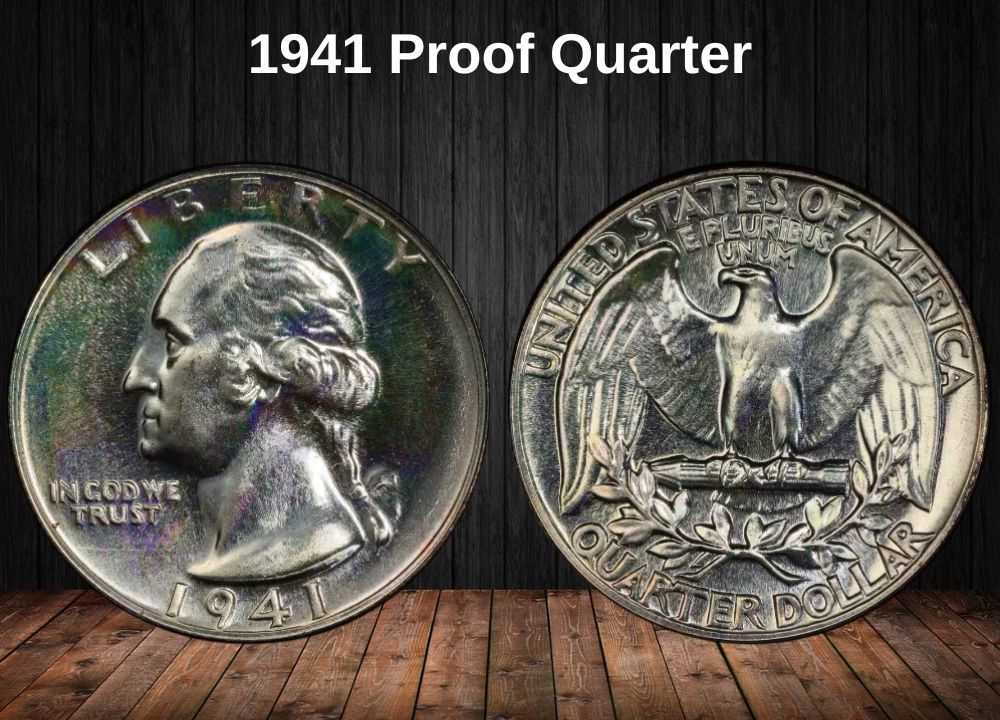
The 1941 Proof Washington quarter represents the pinnacle of U.S. Mint craftsmanship during the pre-war era. Struck exclusively for collectors, each proof received multiple strikes on specially polished planchets, resulting in razor-sharp details and the signature mirror-like fields with frosted devices. The effect makes George Washington’s portrait appear almost three-dimensional, transforming this silver quarter into a miniature piece of art.
With a modest mintage of just over 15,000 coins, the 1941 proof was among the final proofs struck before the Mint suspended proof coinage in 1942 due to World War II. This historical timing elevates its significance, making it not only a technical masterpiece but also a poignant reminder of the last days of peace before America’s wartime mobilization.
High-grade survivors remain scarce because early proofs were often mishandled or improperly stored, leading to hairlines, haze, or loss of original brilliance. As a result, cameo examples with strong contrast between frosted devices and reflective fields are particularly prized today.
1941 Proof Quarter Price/Grade Chart
| Date | Auction House | Grade | Price |
|---|---|---|---|
| 04/25 | SB | PR68 | $2,160 |
| 02/25 | SB | PR67 | $168 |
| 01/25 | SB | PR67 | $168 |
| 08/24 | SB | PR65 | $48 |
| 06/24 | HA | PR68 | $2,760 |
| 06/24 | HA | PR68 | $1,320 |
| 05/24 | HA | PR68 | $2,640 |
| 04/24 | SB | PR66 | $48 |
| 04/24 | SB | PR68 | $1,320 |
| 02/24 | SB | PR65 | $144 |
Rare 1941 Quarter Error List
1. 1941 Doubled Die Obverse (DDO) Errors
The 1941 Doubled Die Obverse (DDO) is one of the standout minting errors of the year, created when the working die received multiple hub impressions slightly out of alignment. This produced the classic shadow-like doubling across key design elements.
The doubling is most visible in:
- The inscriptions “LIBERTY” and “IN GOD WE TRUST”.
- Washington’s hair details, especially above the ear.
- Portions of the date numerals “1941”.
While magnification helps confirm the variety, stronger examples can be seen with the naked eye, making them especially desirable to collectors.
This variety illustrates the imperfections of pre-war minting technology and highlights the hands-on nature of coin production during the early 1940s.
1941 Doubled Die Obverse Quarter Price/Grade Chart
| Grade | Value Range | Notes |
|---|---|---|
| VF20 | $75 – $120 | Doubling visible under magnification |
| XF40 | $150 – $250 | Clearer doubling; moderate wear |
| AU55 | $300 – $500 | Strong detail; light wear only |
| MS63 | $600 – $950 | Doubling sharp; luster intact |
| MS65 | $1,200 – $2,000 | High-end rarity; registry set demand |
2. 1941 DDR (FS-801) Errors
The 1941 Doubled Die Reverse (DDR), cataloged as FS-801, is one of the most dramatic reverse varieties in the Washington quarter series. It was created when the reverse die received multiple misaligned impressions from the master hub, producing a noticeable doubling effect across the design.
Key diagnostics include:
- Clear doubling on the inscriptions “UNITED STATES OF AMERICA” and “QUARTER DOLLAR”.
- Doubling in the eagle’s feathers and wings, with some examples showing bold, almost shadow-like outlines.
- In stronger examples, the E PLURIBUS UNUM ribbon also shows clear separation lines.
The FS-801 DDR is scarcer than the obverse DDO varieties of 1941, making authenticated specimens highly desirable among error specialists. Severity of doubling varies, and coins with stronger, naked-eye visible doubling command the highest premiums at auction.
1941 DDR (FS-801) Quarter Price/Grade Chart
| Grade | Value Range | Notes |
|---|---|---|
| VF20 | $125 – $200 | Doubling visible under magnification |
| XF40 | $250 – $400 | Clearer doubling, moderate wear |
| AU55 | $500 – $800 | Strong detail, lightly circulated |
| MS63 | $1,000 – $1,600 | Bold doubling with luster |
| MS65 | $2,000 – $3,200 | Rare in Gem Mint State; top collector demand |
3. 1941-D DDO (FS-101) Errors
The 1941-D Doubled Die Obverse (FS-101) combines two powerful collecting factors: the prestige of a Denver mint issue and the dramatic appeal of a doubled die variety. This error occurred when a Denver working die received multiple misaligned impressions from the master hub, creating visible doubling across the obverse.
Key diagnostics include:
- Doubling on “LIBERTY” and “IN GOD WE TRUST.”
- Overlapping lines visible in Washington’s hair details, especially above the ear.
- Some examples also show light doubling in the date “1941.”
While similar to the Philadelphia DDO, the Denver FS-101 shows unique die characteristics and slightly different spreading patterns, making it a distinct collectible. Because Denver quarters from 1941 already carry stronger premiums than Philadelphia issues, this error variety enjoys an even higher demand curve among advanced collectors.
1941-D DDO (FS-101) Quarter Price/Grade Chart
| Grade | Value Range | Notes |
|---|---|---|
| VF20 | $200 – $350 | Doubling visible with magnification |
| XF40 | $400 – $650 | Stronger doubling; moderate wear |
| AU55 | $750 – $1,200 | Light circulation only; crisp details |
| MS63 | $1,500 – $2,500 | Popular collector grade with solid luster |
| MS65 | $3,000 – $4,800 | Rare in Gem Mint State; registry-level rarity |
4. 1941-D DDR (FS-801) Errors
The 1941-D Doubled Die Reverse (DDR), cataloged as FS-801, is one of the most elusive error varieties in the entire Washington quarter series for that year. This variety was created when a reverse die at the Denver Mint received multiple hub impressions that were slightly misaligned, producing clear doubling on design elements.
Key diagnostics include:
- Doubling on “UNITED STATES OF AMERICA” and “QUARTER DOLLAR.”
- Noticeable separation lines in the eagle’s wing feathers and breast.
- Doubling sometimes visible in the ribbon of E PLURIBUS UNUM.
Because Denver’s mintages were smaller than Philadelphia’s and circulation on the western frontier was especially heavy, confirmed survivors are very rare. This scarcity makes the 1941-D DDR FS-801 a trophy piece for specialists.
⚠️ Authentication is critical: due to the rarity and value of this error, counterfeit or misattributed examples appear in the market. Collectors should only purchase coins certified by PCGS, NGC, or ANACS with the FS-801 attribution.
1941-D DDR (FS-801) Quarter Price/Grade Chart
| Grade | Value Range | Notes |
|---|---|---|
| VF20 | $300 – $500 | Doubling visible with magnification |
| XF40 | $600 – $900 | Moderate wear, doubling sharp |
| AU55 | $1,200 – $1,800 | Light wear; very scarce in AU |
| MS63 | $2,500 – $4,000 | Few certified examples exist |
| MS65 | $6,000 – $9,000 | Ultra-rare; registry-level rarity |
Where to Sell Your Quarter Coin?
Now that you know the value of your quarter, the next step is deciding where to sell it. There are several trusted options—both online and in person—that can help you get the best price depending on your coin’s rarity and condition.
To see the full list of recommended places, along with their advantages and disadvantages, check our complete guide on where to sell your quarter coins.
FAQ About the 1941 Washington Quarter
1. Why is the 1941 Quarter historically significant?
The 1941 Washington Quarter was minted as the U.S. entered World War II. Struck in 90% silver, it represents both the early Washington series and an era of global conflict, making it appealing to history-focused collectors.
2. Which mints produced the 1941 Quarter?
The coin was struck at Philadelphia (no mint mark), Denver (“D”), and San Francisco (“S”). The Philadelphia issue had the largest mintage, while the 1941-S is scarcer in higher Mint State grades.
3. Are there any notable errors or varieties for the 1941 Quarter?
Yes. Collectors look for doubled die obverses (DDO), repunched mintmarks (RPMs), and off-center strikes. Some 1941-S coins show particularly interesting RPM varieties, which can command premiums among specialists.
4. How much is a 1941 Quarter worth?
In circulated condition, most examples are worth $5–$15, slightly above silver melt. Mint State coins (MS65) generally range from $100–$250, with gem examples (MS67+) reaching $1,000 or more, especially for the 1941-S.
5. What should collectors look for when evaluating a 1941 Quarter?
Pay attention to strike sharpness—well-defined hair on Washington and detailed eagle feathers are signs of higher quality. Original luster, toning, and the absence of cleaning greatly increase desirability. For rarer varieties, magnification is key, and professional certification (PCGS or NGC) is strongly recommended.

